
漢德百科全書 | 汉德百科全书
 FIFA Fussball-Weltmeisterschaft 1990
FIFA Fussball-Weltmeisterschaft 1990

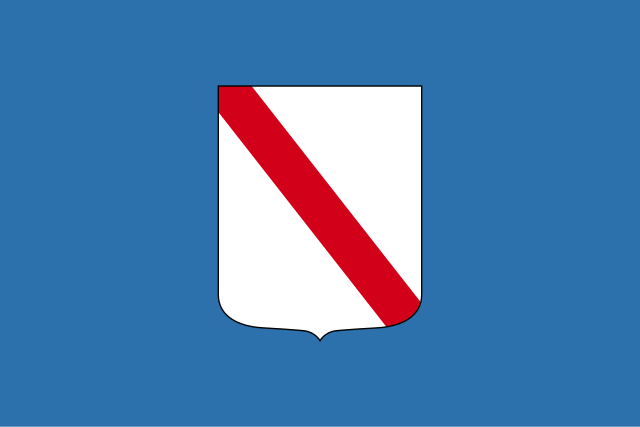 Campania
Campania

 Emilia-Romagna
Emilia-Romagna
 FIFA Fussball-Weltmeisterschaft 1990
FIFA Fussball-Weltmeisterschaft 1990

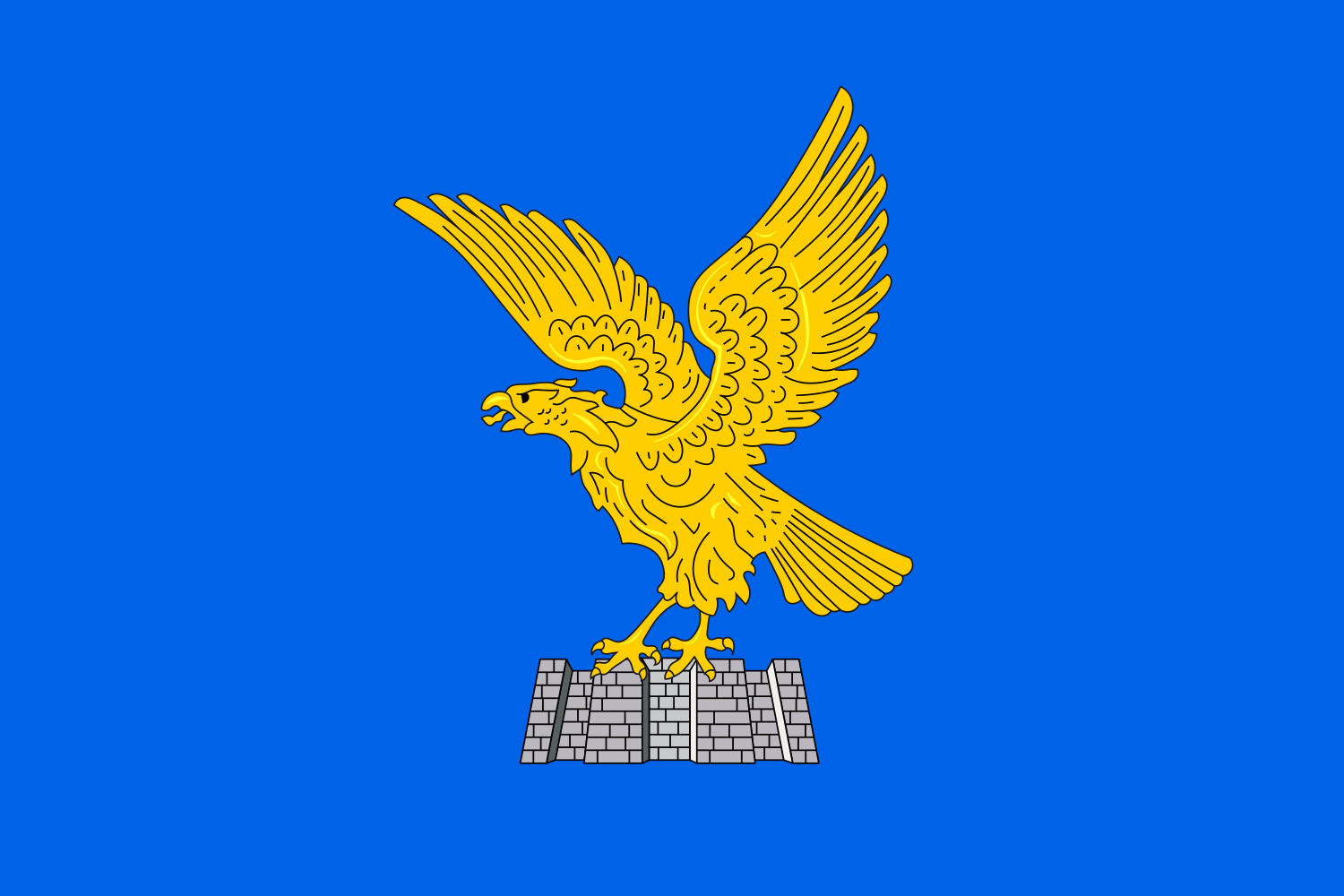 Friuli-Venezia Giulia
Friuli-Venezia Giulia
 Italy
Italy

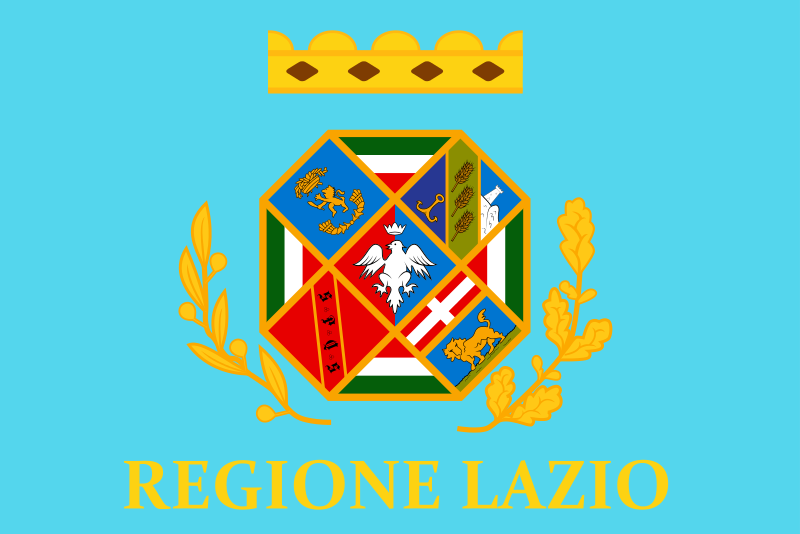 Lazio
Lazio

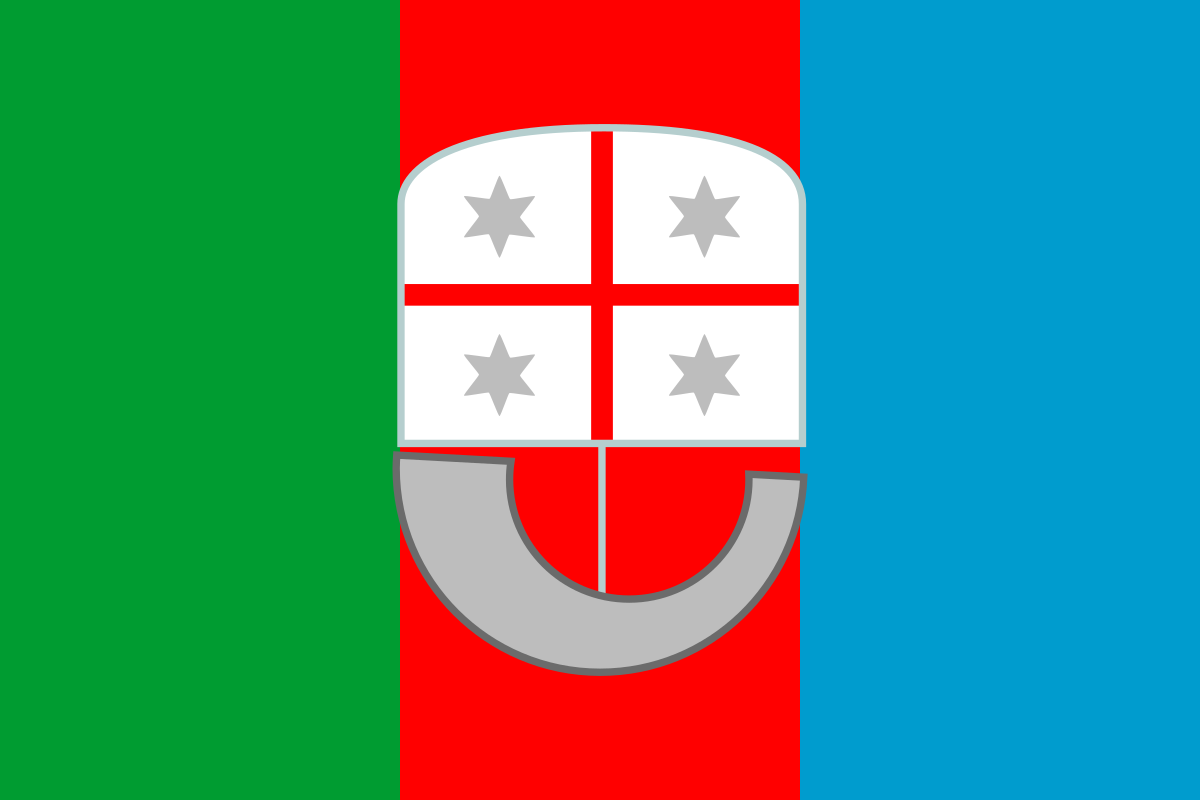 Liguria
Liguria

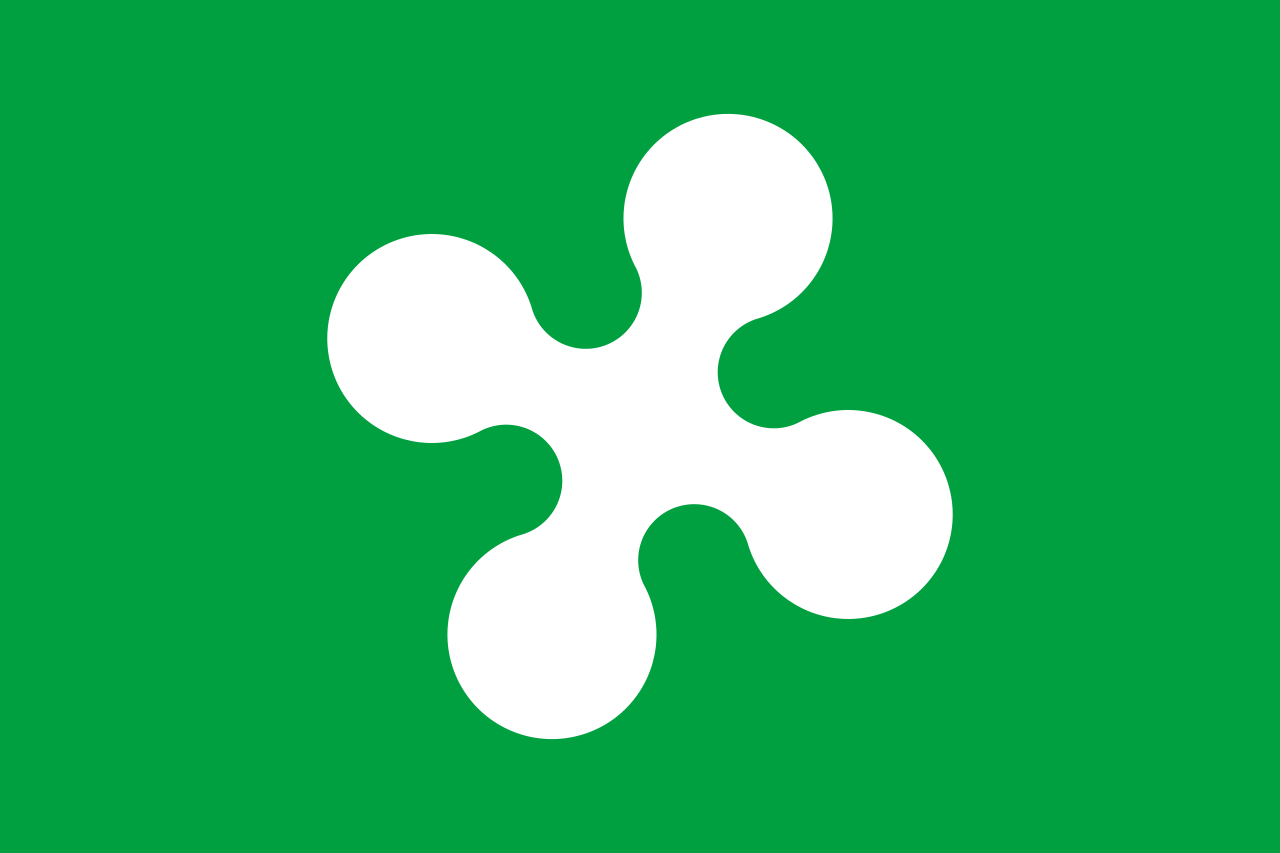 Lombardia
Lombardia

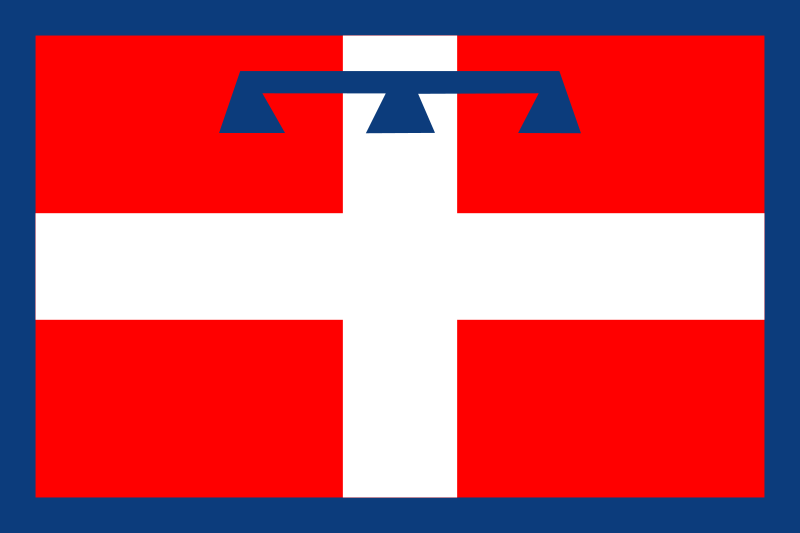 Piemonte
Piemonte

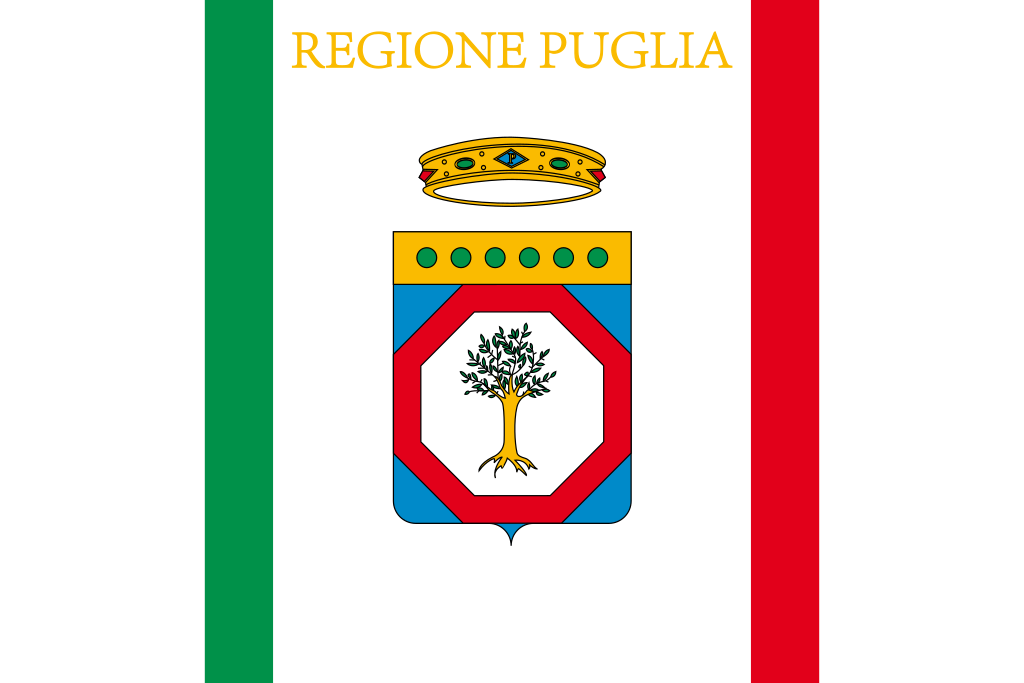 Puglia
Puglia

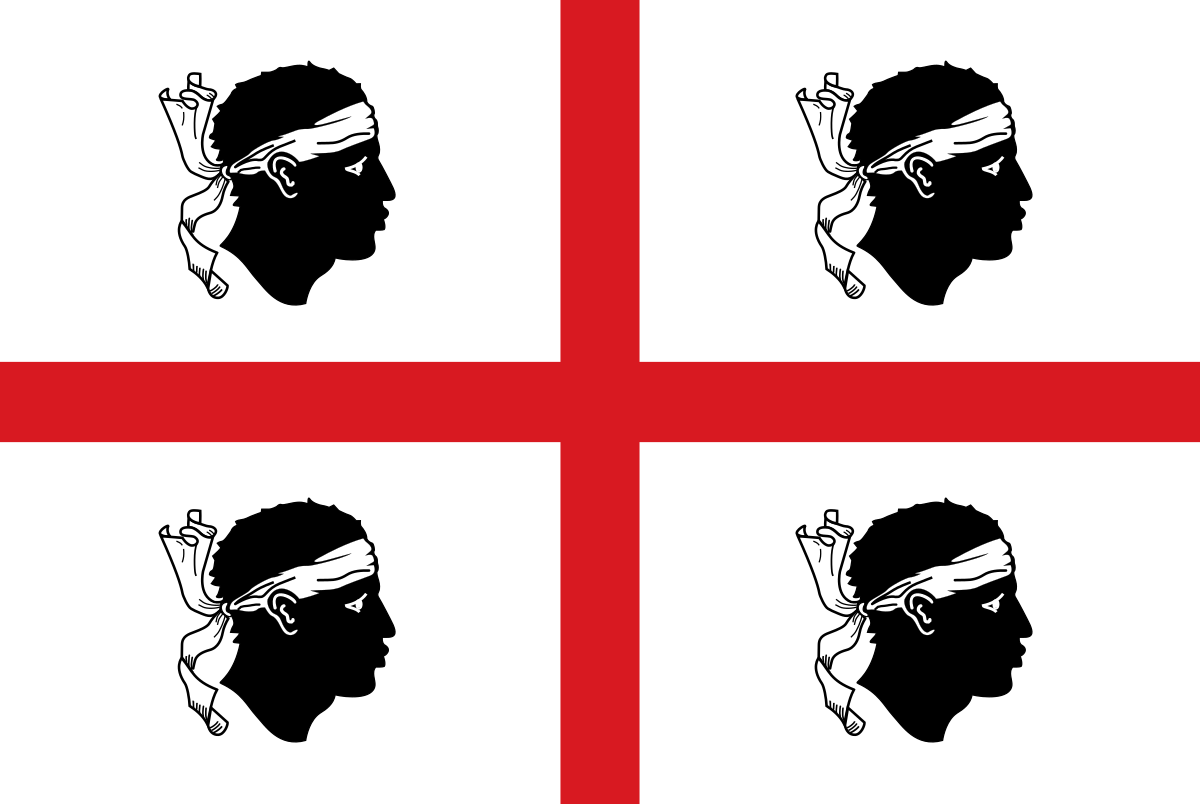 Sardegna
Sardegna

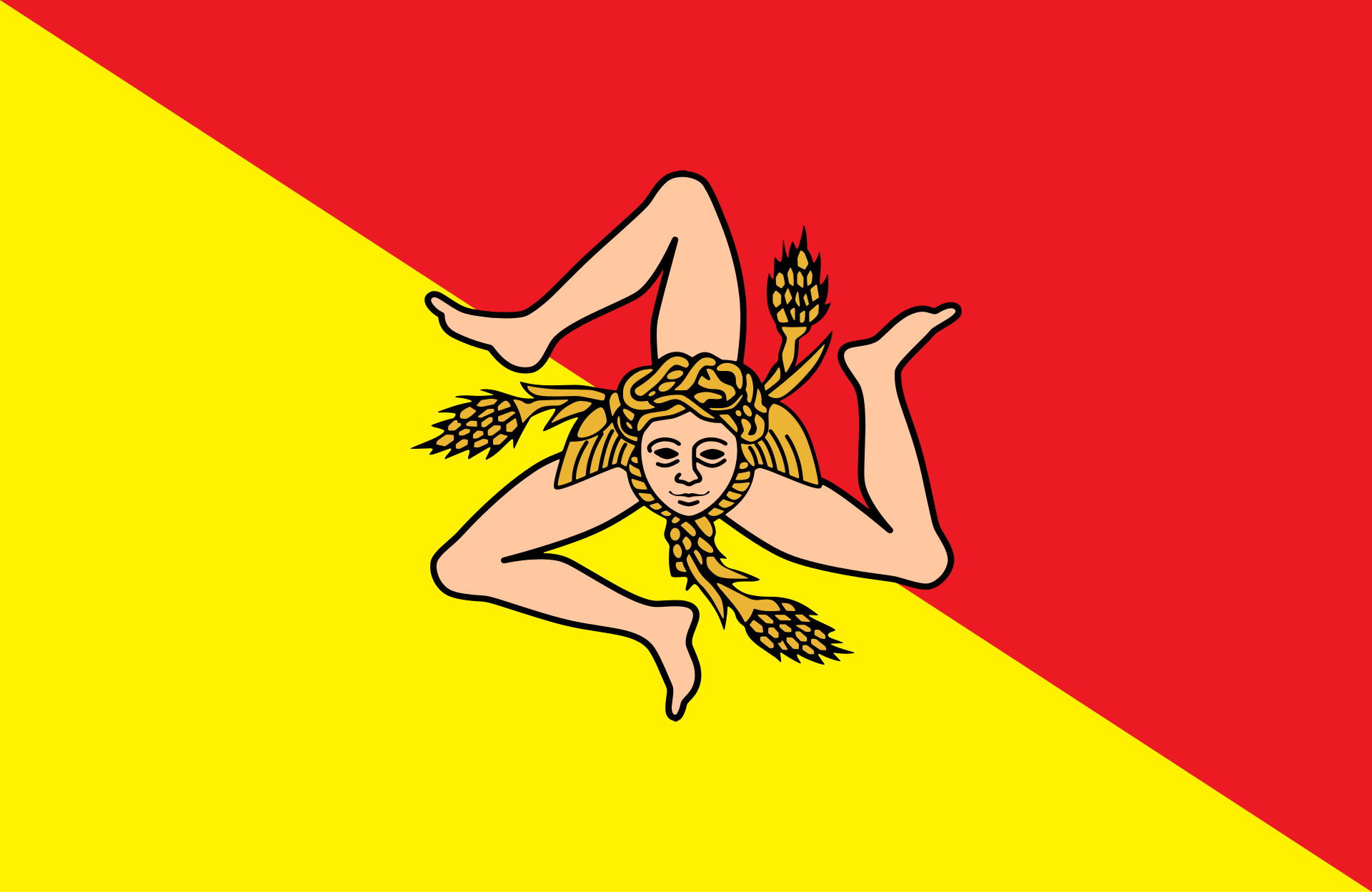 Sicilia
Sicilia

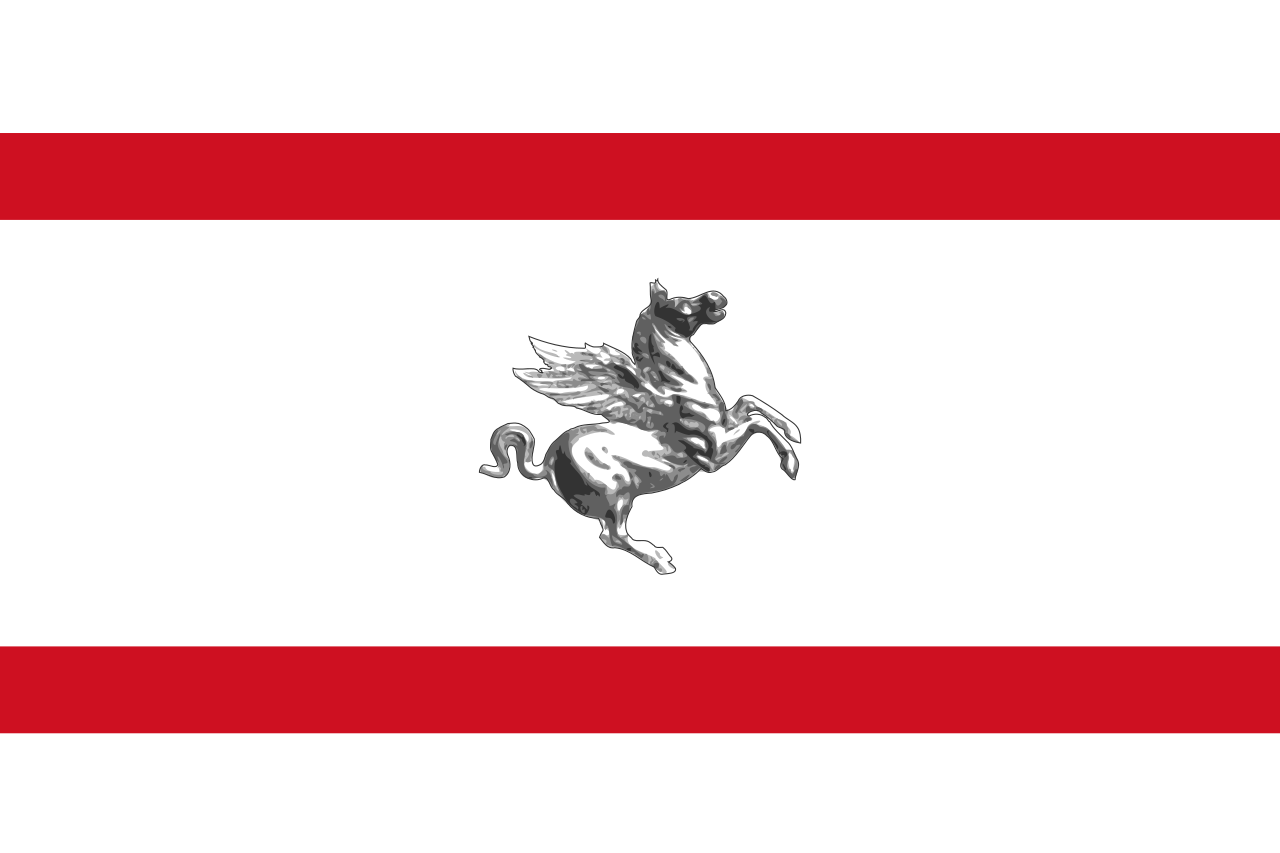 Toscana
Toscana

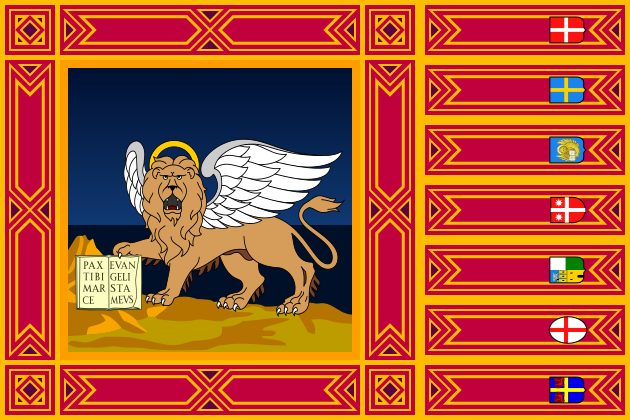 Veneto
Veneto
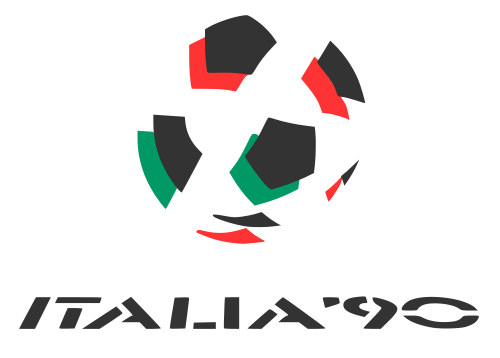


Palermo (sizilianisch Paliemmu) ist die Hauptstadt der Autonomen Region Sizilien und der Metropolitanstadt Palermo. Sie liegt an einer Bucht an der Nordküste Siziliens. Im 8. Jahrhundert v. Chr. gegründet, erlebte die Stadt vor allem unter der Vorherrschaft der Araber sowie der Normannen und der Staufer eine Blütezeit. Palermo war u. a. Residenzstadt von Friedrich II.
Heute ist Palermo mit 668.405 Einwohnern (Stand 31. Dezember 2017) Italiens fünftgrößte Stadt und das politische sowie kulturelle Zentrum Siziliens.
巴勒莫(意大利语:Palermo),位于意大利西西里岛西北部,是西西里岛的首府,人口约130万,面积4992平方千米。
巴勒莫早于八千年前已有人聚居。公元前734年腓尼基人来到巴勒莫,在此建立港口。由于巴勒莫本身属天然良港,古希腊人曾为此开战,最终于公元前276年沦为希腊人殖民地。罗马帝国时期巴勒莫一度是古罗马帝国一部分。
在古代历史,巴勒莫的重要性都仅次于叙拉古或特拉帕尼等城市;中世纪后,拜占庭帝国派驻的总督常住于此已成定例;830年阿拉伯人入侵对巴勒莫展开围城战,长达一年的时间毫无援军援助,831年9月拜占庭的西西里总督与主教潜逃失败而丧生,巴拉摩在这种状况下陷落,这场战役人口从七万人减少至三千人,为了让城市重现生机阿拉伯人派驻地方长官统治。[1]1130年鲁杰罗二世于西西里岛创立西西里王国。王国把巴勒莫作为首都,众多建设也不断进行,包括兴建巴勒莫主教座堂。巴勒莫是于1861年意大利统一时落入意大利手中。工业也在随后开始发展,城市也向北扩张。
パレルモ(イタリア語: Palermo (![]() 音声ファイル))は、イタリアのシチリア島北西部に位置する都市であり、その周辺地域を含む人口約68万人の基礎自治体(コムーネ)。シチリア島最大の都市にしてシチリア州の州都であり、パレルモ県の県都でもある[4]。独自の国際色豊かな文化を生み出した中世シチリア王国の古都。
音声ファイル))は、イタリアのシチリア島北西部に位置する都市であり、その周辺地域を含む人口約68万人の基礎自治体(コムーネ)。シチリア島最大の都市にしてシチリア州の州都であり、パレルモ県の県都でもある[4]。独自の国際色豊かな文化を生み出した中世シチリア王国の古都。
Palermo (Italian: [paˈlɛrmo] (![]() listen); Sicilian: Palermu; Latin: Panormus, from Greek: Πάνορμος, translit. Pánormos) is a city of Southern Italy, the capital of both the autonomous region of Sicily and the Metropolitan City of Palermo. The city is noted for its history, culture, architecture and gastronomy, playing an important role throughout much of its existence; it is over 2,700 years old. Palermo is located in the northwest of the island of Sicily, right by the Gulf of Palermo in the Tyrrhenian Sea.
listen); Sicilian: Palermu; Latin: Panormus, from Greek: Πάνορμος, translit. Pánormos) is a city of Southern Italy, the capital of both the autonomous region of Sicily and the Metropolitan City of Palermo. The city is noted for its history, culture, architecture and gastronomy, playing an important role throughout much of its existence; it is over 2,700 years old. Palermo is located in the northwest of the island of Sicily, right by the Gulf of Palermo in the Tyrrhenian Sea.
The city was founded in 734 BC by the Phoenicians as Ziz. Palermo then became a possession of Carthage. Two Greek colonies were established, known collectively as Panormos or "All-Port"; the Carthaginians used this name on their coins after the 5th century BC. As Panormus, the town became part of the Roman Republic and Empire for over a thousand years. From 831 to 1072 the city was under Arab rule during the Emirate of Sicily when the city first became a capital. The Arabs shifted the Greek name into Bal'harm[1][2] (Arabic: بَلَرْم), the root for Palermo's present-day name. Following the Norman reconquest, Palermo became the capital of a new kingdom (from 1130 to 1816), the Kingdom of Sicily and the capital of the Holy Roman Empire under Emperor Frederick II and King Conrad IV.
The population of Palermo urban area is estimated by Eurostat to be 855,285, while its metropolitan area is the fifth most populated in Italy with around 1.2 million people. In the central area, the city has a population of around 676,000 people. The inhabitants are known as Palermitani or, poetically, panormiti. The languages spoken by its inhabitants are the Italian language and the Palermitano dialect of the Sicilian language.
Palermo is Sicily's cultural, economic and tourism capital. It is a city rich in history, culture, art, music and food. Numerous tourists are attracted to the city for its good Mediterranean weather, its renowned gastronomy and restaurants, its Romanesque, Gothic and Baroque churches, palaces and buildings, and its nightlife and music.[3] Palermo is the main Sicilian industrial and commercial center: the main industrial sectors include tourism, services, commerce and agriculture.[4] Palermo currently has an international airport, and a significant underground economy.[citation needed] In fact, for cultural, artistic and economic reasons, Palermo was one of the largest cities in the Mediterranean and is now among the top tourist destinations in both Italy and Europe. It is the main seat of the UNESCO World Heritage Site Arab-Norman Palermo and the Cathedral Churches of Cefalù and Monreale. The city is also going through careful redevelopment, preparing to become one of the major cities of the Euro-Mediterranean area.[5]
Roman Catholicism is highly important in Palermitano culture. The Patron Saint of Palermo is Santa Rosalia whose Feast Day is celebrated on 15 July. The area attracts significant numbers of tourists each year and is widely known for its colourful fruit, vegetable and fish markets at the heart of Palermo, known as Vucciria, Ballarò and Capo.[6]
Palerme [palɛʁm]2 (en italien : Palermo [paˈlɛrmo]3 Écouter, en sicilien :Palermu) est une ville italienne, chef-lieu et plus grande ville de la région Sicile avec environ 650 000 habitants, et formant avec ses banlieues une unité urbaine d'environ 1 million d'habitants. Elle se situe dans une baie sur la côte nord de l'île.
En 1962, la ville a été récompensée par le Prix de l'Europe.
Palermo (AFI: [paˈlɛrmo][5] ; Palermu [paˈlɛmmʊ] in siciliano, Paliemmu in dialetto palermitano[6]) è un comune italiano di 664 182 abitanti[3], capoluogo dell'omonima città metropolitana e della Regione siciliana.
È il quinto comune italiano per popolazione nonché il principale centro urbano dell'isola di Sicilia e dell'Italia insulare, secondo nel Mezzogiorno d'Italia e trentesimo a livello europeo.
La città vanta una storia plurimillenaria e ha avuto un ruolo importante per le vicende del Mediterraneo e dell'Europa. Fondata dai Fenici tra il VII e il VI secolo a.C.[7], viene conquistata nel 254 a.C. dai Romani ed è divenuta il principale centro dell'isola (Provincia Sicilia)[8]. Conquistata dai Vandali nel 429, passa nel 536 sotto Bisanzio e poi inesorabilmente conquistata dai Saraceni nell'831. Successivamente, con l'avvento dei Normanni e il ritorno alla cristianità, fu la città di incoronazione per i numerosi sovrani di Sicilia, proprio a questa circostanza si devono i titoli attribuiti alla città: «Prima Sedes, Corona Regis et Regni Caput». Da allora è rimasta, con alterne vicende, la capitale del Regno di Sicilia fino al 1816. Particolarmente importanti furono i Vespri siciliani, ribellione scoppiata a Palermo nel 1282.
Dal 1816 al 1817 fu capitale provvisoria del neonato Regno delle Due Sicilie e successivamente divenne la seconda città per importanza dello stesso regno duo-siciliano, fino al 1861, anno dell'unità d'Italia.
La lunga storia della città e il succedersi di numerose civiltà e popoli le hanno regalato un notevole patrimonio artistico e architettonico. Il sito seriale Palermo arabo-normanna e le cattedrali di Cefalù e Monreale, di cui fanno parte più beni monumentali situati in città, nel 2015 è stato dichiarato Patrimonio dell'umanità dall'Unesco.[9][10] Numerosi edifici, tra chiese e palazzi, sono riconosciuti monumenti nazionali italiani.
A Palermo ha sede l'Assemblea regionale siciliana, la più antica sede parlamentare in attività del mondo[11][12], nonché una rilevante sede universitaria. La sua arcidiocesi è sede metropolitana e sede del primate di Sicilia[13]. Nominata Capitale Italiana dei Giovani 2017, è altresì capitale italiana della cultura per il 2018.[14]
Palermo (AFI: [paˈlɛrmo], en siciliano: Palemmu [paˈlɛmmʊ], en el dialecto local: Paliemmu [paˈljæmmʊ]) es una ciudad capital de la región autónoma de Sicilia y de la Ciudad metropolitana de Palermo. En ella habitan 860 000 personas (2016) y en su aglomeración urbana cuenta con cerca de 980 000, cifra que aumenta hasta 1 500 135 habitantes en toda su área metropolitana (la quinta más poblada de Italia).
Su historia milenaria le ha dotado de un considerable patrimonio artístico y arquitectónico que abarca desde restos púnicos hasta casas de estilo Art Nouveau, pasando por residencias de estilo árabe y normando, iglesias barrocas y teatros neoclásicos. Para actividades culturales, artísticas y económicas fue una de las ciudades más grandes del Mediterráneo y hoy es un apreciado destino estival para el turista que visita tierras italianas.2
En julio de 2015, el conjunto «Palermo árabe-normando y las catedrales de Cefalú y Monreale» fue incluido en la lista del patrimonio de la Humanidad por la Unesco.3
Пале́рмо (др.-греч. Πάνορμος, лат. Panormus, итал. Palermo [paˈlɛrmo] ![]() слушать, сиц. Palermu) — административный центр одноимённой провинции, расположенной в Италии.
слушать, сиц. Palermu) — административный центр одноимённой провинции, расположенной в Италии.
Покровителем города считается св. Розалия. Праздник города — 15 июля.


Bari war bereits während der mittleren Bronzezeit bewohnt. Siedlungsspuren von der mittleren Bronze- (ca. 1700–1350 v. Chr.) bis zur frühen Eisenzeit (ab ca. 950 v. Chr.) fand man an mehreren Stellen der heutigen Altstadt: um die Kirchen St.-Peter, S. Scolastica und S. Maria del Buonconsiglio. Zu den Funden gehören auch Fragmente mykenischer Tongefäße aus dem Späthelladikum III B und III C (spätes 14. bis 12./11. Jahrhundert v. Chr.), die auf Handel mit Griechenland deuten.[2] Im dritten Jahrhundert v. Chr. wurde Bari von Griechen besiedelt, die die Stadt Barion nannten. Als Teil des Römischen Reiches wurde Bari (Barium) zum municipium cum suffragio. In dieser Zeit konnte die Stadt eigene Gesetze erlassen und eigene Münzen prägen. Zwischen 476 und 840 war Bari Teil der Germanenreiche in Italien. Seit dem 4. Jahrhundert ist der Ort Sitz eines Bistums, des heutigen Erzbistums Bari-Bitonto.
Im Jahr 847 eroberte eine Flotte der Sarazenen die Stadt, die dort ein islamisches Emirat in Italien gründeten. 871 wurde Bari wieder vom Byzantinischen Reich eingenommen, das dort das Zentrum seiner italienischen Territorien errichtete.[3] Noch 1002 wurde Bari erneut von Arabern erobert und von der Byzantinischen Armee rasch zurückerobert. Gegen die Byzantiner aber erhob sich der Barenser Melus (Melo) 1009 und 1017; als Ismahel (Ismail) ist er auf dem goldbestickten Sternenmantel verewigt, den er dem deutschen Kaiser Heinrich II. geschenkt hatte.
Am 15. April 1071 eroberten nach dreijähriger Belagerung die Normannen unter Robert Guiskard die Stadt, den zu dieser Zeit letzten Besitz von Byzanz in Italien. 1087 wurden die Gebeine des heiligen Nikolaus von Myra nach Bari gebracht. Der Heilige ist seither in Italien auch als Nicola di Bari bekannt. 1155 rebellierten die Bewohner der Stadt gegen die Normannen. Als Vergeltungsaktion ließ Wilhelm I „der Böse“ im Juni des folgenden Jahres die Stadt bis auf die Kathedrale und die Basilica St. Nicola zerstören und vertrieb die Bewohner.
Unter Friedrich II. erlebte Bari eine Blütezeit. Dieser kam 1221 erstmals in die Stadt. Bei seiner Rückkehr von seinem Kreuzzug nach 1229 waren die Tore der Stadt verschlossen, so dass er sich gewaltsam Zutritt verschaffen musste. Daher ließ er vermutlich das Kastell bauen, um die Stadt in Schach zu halten. Andererseits gewährte er der Stadt großzügige Handelsprivilegien und beließ ihr die führende Rolle in der Region. Umso härter traf Bari die Bevorzugung fremder Kaufleute und Bankiers unter den Anjou. Nach zahlreichen Wirren und Machtkämpfen unter dem Adel begann erst 1813 unter Joachim Murat, dem zum König von Neapel aufgestiegenen Schwager Napoleons, der Bau der Neustadt.
巴里(意大利语:Bari)是意大利南部第二大城市,面积116平方公里,人口326,201人(2001年)。巴里是普利亚大区首府,位处亚得里亚海,也是巴里省的首府。1990年代,巴里的人口发展和国家总趋势一致,不断减少,这有利于城域圈的发展。当时很有必要研究城区:现在这个项目正在进行,有12个市镇选择参与其中,约600,000居民。 城镇包括三个部分:半岛北部建筑密集的老城区市,现在主要的夜生活街区之一,其中有著名的圣尼各老圣殿、圣撒比诺主教座堂(1035年 - 1171年)和斯瓦比亚城堡。 巴里的历史可追溯至古罗马帝国时代。其时巴里位处古罗马交通要道上,属一个交汇点。中世纪时巴里屡受战火破坏,更一度被伊斯兰人入侵占据达二十年。文艺复兴时代,巴里为那不勒斯王国之一部分,后来在十九世纪成为意大利王国之一部分。
バーリ(伊: Bari (![]() 音声ファイル))は、イタリア共和国南部の都市で、その周辺地域を含む人口約32万人の基礎自治体(コムーネ)。プッリャ州の州都であり、バーリ県の県都である。
音声ファイル))は、イタリア共和国南部の都市で、その周辺地域を含む人口約32万人の基礎自治体(コムーネ)。プッリャ州の州都であり、バーリ県の県都である。
アドリア海に面した港湾都市であり、東地中海の国々と広範囲な貿易をおこなう商業の一大中心地である。サンタクロースのもととなった聖人ニコラオス(聖ニコラ)ゆかりの地として巡礼地ともなっている。
Bari (Italian pronunciation: [ˈbaːri] (![]() listen); Barese: Bare [ˈbæːrə]; Latin: Barium; Ancient Greek: Βάριον, translit. Bárion) is the capital city of the Metropolitan City of Bari and of the Apulia region, on the Adriatic Sea, in southern Italy. It is the second most important economic centre of mainland Southern Italy after Naples and Palermo, a port and university city, as well as the city of Saint Nicholas. The city itself has a population of 326,799, as of 2015, over 116 square kilometres (45 sq mi), while the urban area has 700,000 inhabitants. The metropolitan area has 1.3 million inhabitants.
listen); Barese: Bare [ˈbæːrə]; Latin: Barium; Ancient Greek: Βάριον, translit. Bárion) is the capital city of the Metropolitan City of Bari and of the Apulia region, on the Adriatic Sea, in southern Italy. It is the second most important economic centre of mainland Southern Italy after Naples and Palermo, a port and university city, as well as the city of Saint Nicholas. The city itself has a population of 326,799, as of 2015, over 116 square kilometres (45 sq mi), while the urban area has 700,000 inhabitants. The metropolitan area has 1.3 million inhabitants.
Bari is made up of four different urban sections. To the north is the closely built old town on the peninsula between two modern harbours, with the Basilica of Saint Nicholas, the Cathedral of San Sabino (1035–1171) and the Hohenstaufen Castle built for Frederick II, which is now also a major nightlife district. To the south is the Murat quarter (erected by Joachim Murat), the modern heart of the city, which is laid out on a rectangular grid-plan with a promenade on the sea and the major shopping district (the via Sparano and via Argiro).
Modern residential zones surrounding the centre of Bari were built during the 1960s and 1970s replacing the old suburbs that had developed along roads splaying outwards from gates in the city walls. In addition, the outer suburbs developed rapidly during the 1990s. The city has a redeveloped airport named after Pope John Paul II, Karol Wojtyła Airport, with connections to several European cities.
Bari écoutez (Bari en italien, ['baːri], Bàre en dialecte, Vare dans l'ancien dialecte3, Barium en latin, Barion en grec) est une ville italienne de plus de 325 000 habitants, chef-lieu de la ville métropolitaine de Bari et de la région des Pouilles, sur la côte adriatique.
Bari est la ville principale d'une agglomération urbaine de plus de 700 000 habitants. Pour l'ensemble de la surface urbanisée, ce chiffre s'élève à environ 1 300 000 habitants4.
Bari est la neuvième ville italienne par sa population, la troisième du Sud de l'Italie et la première de la région. La ville est l'une des quinze métropoles italiennes5.
Bari est connu pour être la ville où se trouvent les reliques de saint Nicolas. Ce privilège a fait de Bari et de la basilique de la ville l'un des centres importants de l'Église orthodoxe en Occident6. Bari a une forte tradition marchande et est depuis toujours un centre névralgique du commerce et des échanges politico-culturels avec l'Europe et le Moyen-Orient. Son port est actuellement le plus grand port de passagers de la mer Adriatique. Depuis 1930, la Fiera del Levante se tient à Bari et, plus récemment, la ville est devenue le siège du secrétariat du Corridor paneuropéen VIII7.
Le centre historique appelé Bari Vecchia est empreint d'une histoire millénaire et contraste avec le Quartier Murat datant du XVIIIe siècle dont le nom est issu du général Murat. Le quartier est organisé en damier et représente le mieux la tradition commerciale de la ville. Après la Seconde Guerre mondiale, l'urbanisation rapide et souvent incontrôlée a rendu moins régulière la partie moderne de la ville qui s'est développée au-delà du quartier murattiano8.
Bari (, AFI: ['baːri]; Bare - ['baːrə] - in dialetto barese, fino al 1931 Bari delle Puglie[3]) è un comune italiano di 321.222 abitanti capoluogo della regione Puglia.
È il nono comune italiano per popolazione, terzo del Mezzogiorno dopo Napoli e Palermo. La sua area metropolitana è la sesta d'Italia con quasi 1 300 000 abitanti[4].
È nota anche per essere la città nella quale riposano le reliquie di San Nicola. Tale condizione ha reso Bari e la sua basilica uno dei centri prediletti dalla Chiesa ortodossa in Occidente e anche un importante centro di comunicazione interconfessionale tra l'Ortodossia e il Cattolicesimo.
Bari ha una solida tradizione mercantile - imprenditoriale e da sempre è punto nevralgico nell'ambito del commercio e dei contatti politico-culturali con il Medio Oriente. Il suo porto è il maggiore scalo passeggeri del mare Adriatico. Dal 1930 si tiene a Bari la Fiera del Levante, tra le principali esposizioni fieristiche d'Italia. Più recentemente la città è diventata sede del segretariato per il Corridoio pan-europeo 8.
Bari (Bare IPA: ['ba:rə] en dialecto barese, Vare IPA: ['bε:rə] en el antiguo dialecto barese) es una ciudad de Italia, capital de la Ciudad metropolitana homónima y de la región de Apulia. Es la tercera principal ciudad de la Italia meridional tras Nápoles y Palermo. Se localiza en la costa del mar Adriático y su provincia (Ciudad metropolitana desde el 1/1/2015) es la quinta en extensión del país. Cuenta con 327.361 habitantes (31-12-2014), 750.000 en el área urbana y 1.266.000 en el área metropolitana. Limita con las comunas Adelfia, Bitonto, Bitritto, Capurso, Giovinazzo, Modugno, Mola di Bari, Noicattaro, Triggiano y Valenzano.
Ба́ри (итал. Bari, тарант. Bare, др.-греч. Βάριον, лат. Barium) — город-порт на юге Италии. Столица региона Апулия и административный центр одноимённой провинции[2].
Покровителем города считается Николай Чудотворец, чьи мощи хранятся в местной одноименной базилике. Праздник города — 9 мая.

 Emilia-Romagna
Emilia-Romagna
 Bologna
Bologna
 FIFA Fussball-Weltmeisterschaft 1990
FIFA Fussball-Weltmeisterschaft 1990

 International cities
International cities
 *European Capital of Culture
*European Capital of Culture
 Italy
Italy
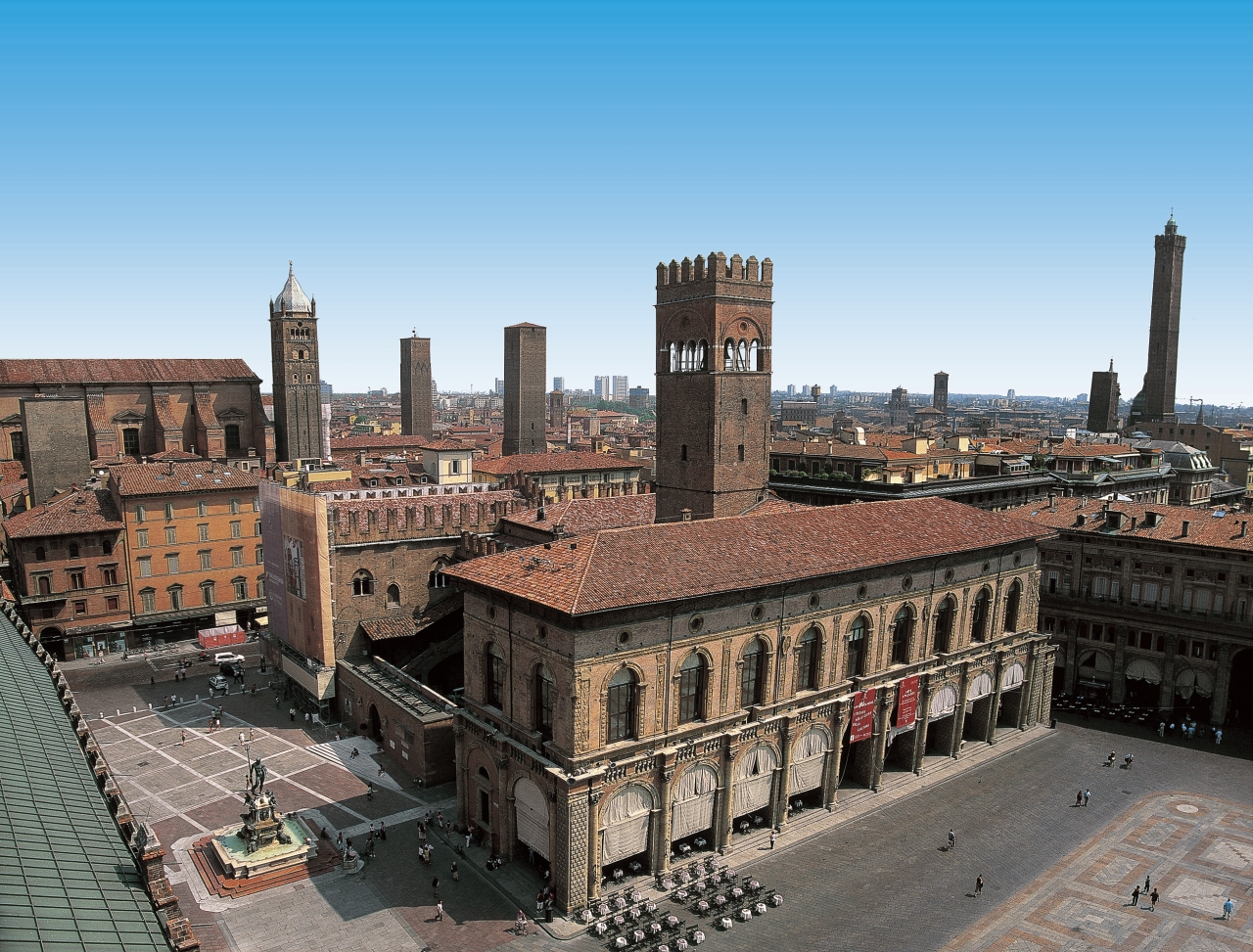
博洛尼亚(意大利语:Bologna)是一座意大利城市,位于北部波河与亚平宁山脉之间,也是艾米利亚-罗马涅的首府。博洛尼亚也是意大利最发达的城市之一。
博洛尼亚拥有世界最古老的大学——博洛尼亚大学,这间大学设立于1088年。博洛尼亚经常被列为意大利生活质量最高的城市之一:在2006年排名第五,在2007年排名第12名(总共有103个意大利城市参加评比)[2]。这是由于博洛尼亚拥有强大的工业传统,广泛且高度发达的社会福利,而且位于意大利最重要公路和铁路枢纽上。博洛尼亚是一个充满活力和国际化的意大利大学城,它拥有丰富的历史、艺术、料理、音乐和文化,并获选为2000年的欧洲文化之都[3]Bologna besitzt eine der schönsten und besterhaltenen Altstädte Europas mit vielen Türmen aus dem Mittelalter und ca. 40 km Arkadengängen, die die weitläufige Innenstadt mit ihren Fußgängerzonen, Plätzen, Kirchen und Palästen miteinander verbinden.
Weit ab vom Massentourismus, dafür mit gut erhaltener Bausubstanz und großartiger Kultur und Geschichte war Bologna im Jahr 2000 zur europäischen Kulturhauptstadt ernannt worden.
Für Motorsportfans ist Bologna und Umgebung ein Mekka, kann man hier die Museen und teilweise auch die Werke von Ducati, Maserati, Lamborghini sowie Ferrari bewundern.
ボローニャ(イタリア語: Bologna (![]() 音声ファイル))は、イタリア共和国北部にある都市で、その周辺地域を含む人口約39万人の基礎自治体(コムーネ)。エミリア=ロマーニャ州の州都であり、ボローニャ県の県都でもある。
音声ファイル))は、イタリア共和国北部にある都市で、その周辺地域を含む人口約39万人の基礎自治体(コムーネ)。エミリア=ロマーニャ州の州都であり、ボローニャ県の県都でもある。
アペニン山脈とポー川の間にあるポー川谷に位置する。1088年創立と、西欧最古の大学ボローニャ大学(ラテン語名アルマ・マーテル・ストゥディオルム)がある。
Bologna (/bəˈloʊnjə/, also UK: /bəˈlɒnjə/; Italian: [boˈloɲːa] (![]() listen); Emilian: Bulåggna [buˈlʌɲːa]; Latin: Bononia) is the capital and largest city of the Emilia-Romagna Region in Northern Italy. It is the seventh most populous city in Italy, at the heart of a metropolitan area of about one million people.
listen); Emilian: Bulåggna [buˈlʌɲːa]; Latin: Bononia) is the capital and largest city of the Emilia-Romagna Region in Northern Italy. It is the seventh most populous city in Italy, at the heart of a metropolitan area of about one million people.
Of Etruscan origin, the city has been a major urban centre for centuries, first under the Etruscans, then under the Romans (Bononia), then again in the Middle Ages, as a free municipality and signoria, when it was among the largest European cities by population. Famous for its towers, churches and lengthy porticoes, Bologna has a well-preserved historical centre, thanks to a careful restoration and conservation policy which began at the end of the 1970s.[3] Home to the oldest university in the world,[4][5][6][7][8] the University of Bologna, established in AD 1088, the city has a large student population that gives it a cosmopolitan character. In 2000 it was declared European capital of culture[9] and in 2006, a UNESCO "city of music".
Bologna is an important agricultural, industrial, financial and transport hub, where many large mechanical, electronic and food companies have their headquarters as well as one of the largest permanent trade fairs in Europe. According to the most recent data gathered by the European Regional Economic Growth Index (E-REGI) of 2009, Bologna is the first Italian city and the 47th European city in terms of its economic growth rate.[10] As a consequence, Bologna is also one of the wealthiest cities in Italy, often ranking as one of the top cities in terms of quality of life in the country: in 2011 it ranked 1st out of 107 Italian cities.[11]
Bologne (en italien : Bologna, prononcé /boˈloɲa/) est une ville italienne située dans le nord-est du pays, entre le Pô et les Apennins. C'est le chef-lieu de la région d'Émilie-Romagne (plaine du Pô) et de la province de même nom et l'une des principales villes d'Italie. Bologne compte environ 390 000 habitants (les Bolonais2) et son aire urbaine regroupe 1 005 000 habitants.
Elle est considérée comme le siège de la plus ancienne université du monde occidental puisqu'elle a été fondée en 10883. Plus de 900 ans après sa fondation, l'université est encore aujourd'hui le cœur de la ville puisque ses 100 000 étudiants constituent un quart de sa population.
Ce rayonnement culturel et son université lui ont valu le surnom de la Dotta (la savante). La ville possède également d'autres surnoms comme la Rossa (la rouge), en référence à ses tuiles en terre cuite et aussi pour son âme politique de gauche communiste, et la Grassa (la grasse) pour son excellente cuisine.
La sauce bolognaise (ragù alla bolognese en italien) est une recette de la région.
Chaque année au printemps, Bologne accueille un salon du livre de jeunesse de renommée internationale, Foire du livre de jeunesse de Bologne (La Fiera del Libro per Ragazzi).
Bologna (pronuncia: [boˈloɲɲa][4] [5]; Bulåggna [buˈlʌɲɲa] in dialetto bolognese[6]) è un comune italiano di 390 198 abitanti,[2] capoluogo dell'omonima città metropolitana, a sua volta capoluogo della regione Emilia-Romagna[7]. Si tratta del settimo comune più popolato d'Italia (4º del Nord dopo Milano, Torino e Genova) ed è il cuore di un'area metropolitana di 1.011.608 abitanti[8]. Antichissima città universitaria, Bologna ospita numerosi studenti. Nota per le sue torri e i suoi lunghi portici, possiede un ben conservato centro storico, fra i più estesi d'Italia.
La città, i cui primi insediamenti risalirebbero almeno al I millennio a.C., fu un importante centro urbano dapprima sotto gli Etruschi e i Celti, poi sotto i Romani poi ancora, nel Medioevo, come libero comune. Capitale settentrionale dello Stato Pontificio a partire dal Cinquecento, ebbe un ruolo molto importante durante il Risorgimento e, durante la seconda guerra mondiale, fu un importante centro della Resistenza. Nel secondo dopoguerra, come buona parte dell'Emilia, è stata governata quasi ininterrottamente da amministrazioni di sinistra.
Bologna è un importante nodo di comunicazioni stradali e ferroviarie del nord Italia, in un'area in cui risiedono importanti industrie meccaniche, elettroniche e alimentari. È sede di prestigiose istituzioni culturali, economiche e politiche e di uno dei più avanzati quartieri fieristici d'Europa. Nel 2000 è stata "capitale europea della cultura", mentre dal 2006 è "città della musica" UNESCO[9].
Bolonia (![]() /boˈloɲa/ (?·i) en italiano, Bologna, en emiliano-romañol, Bulåggna, pronunciado /buˈlʌɲɲa/) es una ciudad de Italia, capital de la ciudad metropolitana homónima y de la región Emilia-Romaña (en el norte del país), situada entre el río Reno y el río Savena, cerca de los Apeninos. Es una de las ciudades históricas mejor conservadas y tiene el segundo casco antiguo medieval más grande de Europa, después del de Venecia.
/boˈloɲa/ (?·i) en italiano, Bologna, en emiliano-romañol, Bulåggna, pronunciado /buˈlʌɲɲa/) es una ciudad de Italia, capital de la ciudad metropolitana homónima y de la región Emilia-Romaña (en el norte del país), situada entre el río Reno y el río Savena, cerca de los Apeninos. Es una de las ciudades históricas mejor conservadas y tiene el segundo casco antiguo medieval más grande de Europa, después del de Venecia.
 FIFA Fussball-Weltmeisterschaft 1990
FIFA Fussball-Weltmeisterschaft 1990

 History
History

 International cities
International cities
 *World Design Capital
*World Design Capital
 Italy
Italy
 Winter Olympics
Winter Olympics
 2006 Winter Olympics
2006 Winter Olympics

 Piemonte
Piemonte
 Turin
Turin

 Ski vacation
Ski vacation

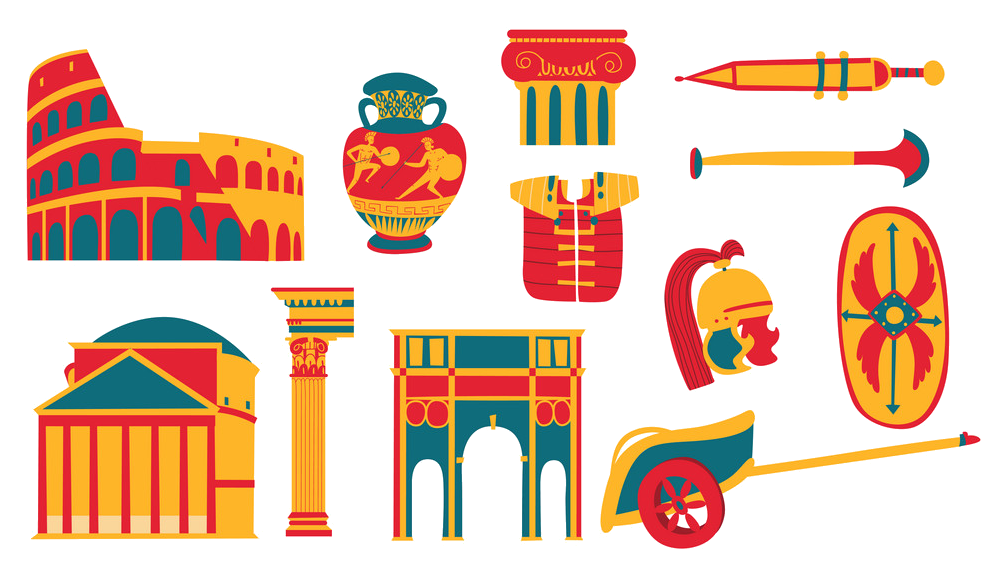 Cities founded by the Romans
Cities founded by the Romans

Turin (italienisch Torino, lateinisch Augusta Taurinorum, piemontesisch Türin) ist eine Großstadt im Nordwesten Italiens, Verwaltungssitz der Metropolitanstadt Turin und der Region Piemont. Die Stadt hat 886.837 Einwohner im Stadtgebiet und ist somit die viertgrößte italienische Stadt. Etwa 1,7 Mio. Einwohner leben in der Agglomeration (2006) und 2,2 Mio. in der Metropolregion.
都灵(意大利语:Torino [toˈriːno] ![]() 聆听;皮埃蒙特语:Turin [tyˈɾiŋ];拉丁语:Augusta Taurinorum),中国大陆和港澳地区称为都灵,台湾称为杜林,是位于意大利北部的重要城市,皮埃蒙特大区和都灵广域市的首府。它坐落在波河的左岸,距离米兰大约140千米(87英里),阿尔卑斯山环绕在城市的西北。都灵中心区有面积130.17km²,人口911,534[2],是意大利人口第四多的城市;都灵城市区有面积1,126.6 km²,人口1,745,221[3];都灵都市圈有面积1,977 km²,人口2,200,000[4](占意大利总人口的3.4%[5])。
聆听;皮埃蒙特语:Turin [tyˈɾiŋ];拉丁语:Augusta Taurinorum),中国大陆和港澳地区称为都灵,台湾称为杜林,是位于意大利北部的重要城市,皮埃蒙特大区和都灵广域市的首府。它坐落在波河的左岸,距离米兰大约140千米(87英里),阿尔卑斯山环绕在城市的西北。都灵中心区有面积130.17km²,人口911,534[2],是意大利人口第四多的城市;都灵城市区有面积1,126.6 km²,人口1,745,221[3];都灵都市圈有面积1,977 km²,人口2,200,000[4](占意大利总人口的3.4%[5])。
都灵是一国际化的欧洲城市,[6][7] 都灵有时被称为“意大利自由的摇篮”、[8]、“阿尔卑斯之都”、“萨沃亚之都”。它拥有众多的文化设施和其他名胜。都灵因为它的巴洛克、洛可可和新古典主义法式建筑而举世闻名。它的很多广场、城堡、庭园和宫殿(如贵妇宫),都是由西西里建筑师菲利波·尤瓦拉建造的,他在设计时借鉴了法国经典建筑凡尔赛宫。[9] 这些法式建筑的典范包括:王宫、斯杜皮尼吉行宫和苏佩尔加大教堂。许多意大利高等教育机构位于此地,如都灵大学、都灵理工大学、都灵美术学院等。还有许多重要和著名的博物馆,如埃及博物馆[10] 和安托内利尖塔。
都灵曾经是欧洲重要的政治中心。1563年,它成为了萨伏依公国的首都,随后是萨伏依王室统治下的萨丁尼亚王国的首都,最后是意大利统一之后的第一个首都(1861年—1865年)。[11] 同时,它也是萨沃亚王室(意大利王室)的故乡。[12] 虽然因为第二次世界大战,它的大部分政治意义和重要性都丢失了,它还是在战后成为了欧洲重要的工业、商业和贸易的集散地。它现在是意大利的工业中心之一,和米兰、热那亚组成了“工业铁三角”。从经济上来说,都灵紧随罗马和米兰之后,是意大利第三大城市。[13] 它的GDP高达580亿美元,排名世界第78位。[14] 虽然不像罗马、米兰那样是“世界级城市”,GaWC评其为“适合发展”级别。[15]
都灵是意大利汽车制造业的摇篮,被称为“意大利汽车之都”或者“意大利的底特律”。是汽车品牌菲亚特、蓝旗亚和阿尔法·罗密欧的总部所在地。[16][17] 都灵还拥有足球俱乐部尤文图斯和都灵,举办过2006年冬季奥林匹克运动会。一些国际空间站设备,如和谐号节点舱和哥伦布实验舱,也是在都灵制造的。
トリノ(伊: Torino (![]() 音声ファイル))は、イタリア共和国ピエモンテ州にある都市で、その周辺地域を含む人口約87万人の基礎自治体(コムーネ)。ピエモンテ州の州都であり、トリノ県の県都。イタリア第4の人口規模を持つ。都市圏の人口は約170万人。一時は100万都市だったが昨今は人口減少が著しい。
音声ファイル))は、イタリア共和国ピエモンテ州にある都市で、その周辺地域を含む人口約87万人の基礎自治体(コムーネ)。ピエモンテ州の州都であり、トリノ県の県都。イタリア第4の人口規模を持つ。都市圏の人口は約170万人。一時は100万都市だったが昨今は人口減少が著しい。
ミラノに次ぐイタリア第2の工業都市であり、自動車工業の拠点である。近代にはサルデーニャ王国の首都が置かれた。サヴォイア王家の王宮群は世界遺産に登録されている。
Turin (/tjʊəˈrɪn, ˈtʊərɪn/;[2] Italian: Torino [toˈriːno] ( listen); Piemontese: Turin [tyˈriŋ])[3] is a city and an important business and cultural centre in northern Italy. It is the capital city of the Metropolitan City of Turin (an administrative division of Italy) and of the Piedmont region, and was the first capital city of Italy from 1861 to 1865. The city is located mainly on the western bank of the Po River, in front of Susa Valley, and is surrounded by the western Alpine arch and Superga Hill. The population of the city proper is 883,281 (30 November 2017)[4] while the population of the urban area is estimated by Eurostat to be 1.7 million inhabitants. The Turin metropolitan area is estimated by the OECD to have a population of 2.2 million.[5]
listen); Piemontese: Turin [tyˈriŋ])[3] is a city and an important business and cultural centre in northern Italy. It is the capital city of the Metropolitan City of Turin (an administrative division of Italy) and of the Piedmont region, and was the first capital city of Italy from 1861 to 1865. The city is located mainly on the western bank of the Po River, in front of Susa Valley, and is surrounded by the western Alpine arch and Superga Hill. The population of the city proper is 883,281 (30 November 2017)[4] while the population of the urban area is estimated by Eurostat to be 1.7 million inhabitants. The Turin metropolitan area is estimated by the OECD to have a population of 2.2 million.[5]
The city has a rich culture and history, being known for its numerous art galleries, restaurants, churches, palaces, opera houses, piazzas, parks, gardens, theatres, libraries, museums and other venues. Turin is well known for its Renaissance, Baroque, Rococo, Neo-classical, and Art Nouveau architecture. Many of Turin's public squares, castles, gardens and elegant palazzi such as the Palazzo Madama, were built between the 16th and 18th centuries. A part of the historical center of Turin was inscribed in the World Heritage List under the name Residences of the Royal House of Savoy.
The city used to be a major European political center. From 1563, it was the capital of the Duchy of Savoy, then of the Kingdom of Sardinia ruled by the Royal House of Savoy, and the first capital of the unified Italy (the Kingdom of Italy) from 1861 to 1865.[6][7] Turin is sometimes called "the cradle of Italian liberty" for having been the birthplace and home of notable individuals who contributed to the Risorgimento, such as Cavour.[8]
The city currently hosts some of Italy's best universities, colleges, academies, lycea and gymnasia, such as the University of Turin, founded in the 15th century, and the Turin Polytechnic. In addition, the city is home to museums such as the Museo Egizio[9] and the Mole Antonelliana. Turin's attractions make it one of the world's top 250 tourist destinations and the tenth most visited city in Italy in 2008.[10]
Even though much of its political significance and importance had been lost by World War II, Turin became a major European crossroad for industry, commerce and trade, and is part of the famous "industrial triangle" along with Milan and Genoa. Turin is ranked third in Italy, after Milan and Rome, for economic strength.[11] With a GDP of $58 billion, Turin is the world's 78th richest city by purchasing power.[12] As of 2010, the city has been ranked by GaWC as a Gamma World city.[13] Turin is also home to much of the Italian automotive industry.[14][15]
Turin is well known as the home of the Shroud of Turin, the football teams Juventus F.C. and Torino F.C., the headquarters of automobile manufacturers FIAT, Lancia and Alfa Romeo, and as host of the 2006 Winter Olympics.
Turin (Torino en italien, Turin en piémontais) est une ville italienne, chef-lieu de la ville métropolitaine de Turin et de la région du Piémont. Turin fut la capitale des États de Savoie de 1563 à 1713, du royaume de Sicile de 1713 à 1720, du royaume de Sardaigne de 1720 à 1861 et du royaume d'Italie de 1861 à 1865.
Torino (AFI: /toˈrino/[4], ascolta[?·info]; Turin in piemontese[5]) è un comune italiano di 879 808 abitanti[2], capoluogo dell'omonima città metropolitana e della regione Piemonte.
Cuore di un'area metropolitana che conta quasi 2 000 000 di abitanti su una superficie approssimativa di circa 2 300 km²,[6] la città di Torino è il quarto comune italiano per popolazione, il terzo complesso economico-produttivo del Paese e costituisce uno dei maggiori poli universitari, artistici, turistici, scientifici e culturali d'Italia. Nel suo territorio sono inoltre presenti aree ed edifici inclusi in due beni protetti dall'UNESCO: alcuni palazzi e zone facenti parte del circuito di residenze sabaude in Piemonte (patrimonio dell'umanità[7]) e l'area delle colline del Po (riserva della biosfera).
Città dalla storia bimillenaria, fu fondata probabilmente come Taurasia nei pressi della posizione attuale attorno al III secolo a.C. dai Taurini, popolazione ligure (o celto-ligure) dell'Italia settentrionale, e trasformata in colonia romana da Augusto col nome di Iulia Augusta Taurinorum nel I secolo a.C. Dopo il dominio ostrogoto fu capitale di un importante ducato longobardo, per poi passare, dopo essere divenuta capitale di marca carolingia, sotto la signoria nominale dei Savoia nell'XI secolo. Città dell'omonimo ducato, nel 1563 ne divenne capitale. Dal 1720 fu capitale del Regno di Sardegna (anche se solo de facto fino alla fusione perfetta del 1847, quando lo divenne anche formalmente),[8] stato che nel XIX secolo avrebbe portato all'unificazione italiana e che fece di Torino la prima capitale del Regno d'Italia (dal 1861 al 1865).
È stata la patria, natia o adottiva, di alcuni fra i più grandi scrittori e letterati italiani del XIX e XX secolo, tra i quali Edmondo De Amicis, Emilio Salgari, Italo Calvino, Natalia Ginzburg, Norberto Bobbio, Cesare Pavese e Primo Levi.
Sede nel 2006 dei XX Giochi olimpici invernali, città natale di alcuni fra i maggiori simboli del Made in Italy nel mondo, come il Martini, il cioccolato gianduja e il caffè espresso, è il fulcro dell'industria automobilistica italiana, nonché importante centro dell'editoria, del sistema bancario e assicurativo, delle tecnologie dell'informazione, del cinema, dell'enogastronomia, del settore aerospaziale, del disegno industriale e dello sport.
Turín (en italiano: Torino, en piamontés: Turin) es una ciudad, importante centro cultural y de negocios del norte de Italia, capital de la región de Piamonte, localizada principalmente en el margen izquierdo del río Po y rodeada por los Alpes. El área metropolitana de Turín, según la Organización para la Cooperación y el Desarrollo Económico, tiene una población de alrededor de 2.200.000 habitantes.2
La ciudad es rica en cultura e historia. Es conocida por sus numerosos museos de arte, sus restaurantes, sus iglesias, sus palacios, sus teatros de ópera, sus plazas, sus parques, sus jardines y sus bibliotecas, entre otros atractivos. Turín es ampliamente reconocida por su arquitectura barroca, rococo, neoclásica y Art Nouveau. Muchas de las plazas públicas de la ciudad, de los castillos, jardines y elegantes palacios (como el Palazzo Madama), fueron construidos por el arquitecto siciliano Filippo Juvarra, quien diseñó estos edificios en el estilo barroco y clásico del Palacio de Versalles, en Francia.3 Ejemplos de estos edificios de inspiración francesa incluyen el Palacio Real de Turín, el Pabellón de caza de Stupinigi y la Basílica de Superga.
Turín es frecuentemente llamada la «cuna de Italia» por ser el lugar de nacimiento de importantes políticos que contribuyeron con la unificación de Italia, como Cavour.4 La ciudad actualmente alberga algunas de las mejores universidades de Italia, como la Universidad de Turín, de seis siglos de antigüedad, y el Politécnico de Turín. También se encuentran en la ciudad museos prestigiosos e importantes, como el Museo Egipcio de Turín5 (el más antiguo en el mundo y considerado el segundo más importante en el mundo después de El Cairo por valor de los hallazgos) y la Mole Antonelliana. Los diversos monumentos y atracciones de Turín la convierten en una de los 250 principales destinos turísticos del mundo y en la décima ciudad más visitada de Italia para el año 2008.6
La ciudad solía ser un importante centro político europeo, siendo la primera capital de Italia en 1861 y la ciudad de residencia de la Casa de Saboya, la familia real de Italia.7 A pesar de que mucho de su significado e importancia política se había perdido cuando comenzó la Segunda Guerra Mundial, se convirtió en uno de los principales centros industriales y comerciales de Europa, y actualmente es una de las ciudades más industrializadas de Italia, formando junto con Milán y Génova el famoso "triángulo industrial". A pesar de tener muchos menos habitantes que Roma y Milán, Turín es la tercera ciudad más rica de Italia, después de estas.8 Con un Producto Interno Bruto de 58.000 millones de dólares, Turín es la ciudad número 78 en la lista de las más ricas del mundo por su poder adquisitivo.91011 Turín es también la sede de gran parte de la potente industria automovilística italiana.1213
La ciudad es también conocida por resguardar la «Sábana Santa», por ser la sede de los equipos de fútbol Juventus F.C. y Torino Football Club, el lugar donde se producen los coches FIAT, Lancia, Alfa Romeo, Maserati y la sede de los juegos olímpicos de invierno de 2006. Varios módulos de la Estación Espacial Internacional, como el Harmony y el Columbus, fueron fabricados en Turín.
Fue la capital del Ducado de Saboya desde 1563, luego del Reino de Cerdeña y finalmente la primera capital de Italia.14 Piero Fassino fue el alcalde de Turín, elegido en mayo de 2011 para un mandato de 5 años, representando a una coalición de centro-izquierda y fue a su vez el sucesor de Sergio Chiamparino. Desde junio de 2016, la alcaldesa es la economista Chiara Appendino, del partido Movimento 5 Estrellas.
Тури́н (итал. Torino [toˈriːno], пьем. Turin [tyˈɾiŋ]) — город в Италии, важный деловой и культурный центр северной Италии. Административный центр региона Пьемонт и одноимённой провинции Турин.
Расположен при впадении реки Дора-Рипария в реку По, на Паданской равнине у подножия Западных Альп, на подступах к Альпийским перевалам.
Четвёртый после Рима, Милана и Неаполя город Италии по количеству жителей, насчитывает около 880 тыс. чел. (2017), вместе с пригородами 1,7 миллион человек.
Город имеет богатую историю и культуру, и известен своими арт-галереями, дворцами, театрами, музеями, парками. Турин также знаменит своей архитектурой в стилях барокко, рококо, неоклассицизма и модерна.
Большая часть замков, дворцов (в частности Палаццо Мадама), садов и площадей были построены в XVI-XVIII вв. в процессе перевода столицы Савойского герцогства (позднее Сардинское королевство) из Шамбери (ныне Франция) в Турин.
Турин иногда называют «колыбелью итальянской свободы», за то, что он является родным городом заметных политиков и людей, внесших большой вклад в Рисорджименто, например Камилло Бенсо ди Кавур. В городе находятся множество университетов, колледжей, академий, лицеев и гимназий. Среди них основанный в XV веке Туринский университет. Самыми известными достопримечательностями Турина являются Египетский музей и символ города Моле Антонеллиана. Эти и многие другие достопримечательности делают город привлекательным для туристов со всего мира и позволяют Турину входить в десятку самых посещаемых городов Италии[3].
Город в XIX веке являлся важным политическим центром Европы. В 1861 году Турин стал первой столицей объединенной Италии и наряду с этим являлся столицей для Савойского дома, правящей династии Королевства Италии. Несмотря на то, что большая часть политической значимости Турина была растеряна после отмены монархии в Италии, город остается важным промышленным, экономическим и торговым центром Европы и Италии. Турин является третьим по экономическим показателям городом страны, после Милана и Рима. Также Турин является своего рода столицей автомобилестроения Италии. В городе располагаются штаб-квартиры компаний FIAT, Lancia, Iveco.
Город известен в мире благодаря христианской реликвии — Туринской плащанице, а также футбольным командам «Ювентус» и «Торино». Турин — столица зимних Олимпийских игр 2006 года.
Покровителем города считается Св. Иоанн Креститель (итал. San Giovanni Battista). Праздник города — 24 июня.

 Architecture
Architecture
 FIFA Fussball-Weltmeisterschaft 1990
FIFA Fussball-Weltmeisterschaft 1990

 History
History

 International cities
International cities
 *European Capital of Culture
*European Capital of Culture
 Italy
Italy

 Art
Art

 Toscana
Toscana
 Florenz
Florenz

 World Heritage
World Heritage

Florenz (italienisch Firenze [fiˈrεnʦe]) ist eine italienische Großstadt mit 382.258 Einwohnern (Stand 31. Dezember 2016). In der Metropolregion leben etwa eine Million Menschen. Florenz ist Hauptstadt sowie größte Stadt der Toskana und der Metropolitanstadt Florenz. In Italien ist Florenz die nach Einwohnern achtgrößte Stadt.
Florenz ist für seine Geschichte berühmt. Als Zentrum des spätmittelalterlichen europäischen Handels- und Finanzwesens war es eine der reichsten Städte des 15. und 16. Jahrhunderts. Florenz gilt als die Wiege der Renaissance. Aufgrund seiner kulturellen Bedeutung – insbesondere für die bildende Kunst – wird es schon seit dem 19. Jahrhundert auch als das „italienische Athen“ bezeichnet.[2][3][4][5]
Durch die mächtige Dynastie der Familie Medici stieg Florenz in der Renaissance zu einer der florierendsten Metropolen Europas auf. Zahlreiche Kunstschaffende und Geistliche waren hier beheimatet: Leonardo da Vinci verbrachte große Teile seiner Jugend in Florenz, Michelangelo fand Unterschlupf in der Kirche der Medici, Galileo Galilei wohnte als Hofmathematiker in den Palästen der Medici. Von 1865 bis 1870 war die Stadt die Hauptstadt des neu gegründeten Königreichs Italien.
Das historische Zentrum von Florenz zieht Jahr für Jahr Millionen von Touristen an. Euromonitor International platziert die Stadt mit fast 4,2 Millionen Besuchern im Jahr 2015 weltweit an 40. Stelle unter den meist besuchten Städten.[6] Die historische Innenstadt wurde von der UNESCO im Jahre 1982 zum Weltkulturerbe erklärt. Aufgrund des künstlerischen und architektonischen Erbes hat das Forbes Magazine Florenz als eine der schönsten Städte der Welt ausgewählt.[7] Hingewiesen wird vor allem auf den Reichtum an Museen, Palästen und Denkmälern.
佛罗伦萨(意大利语:Firenze,拉丁语:Florentia,意大利诗歌:Fiorenza,又译佛罗伦斯、翡冷翠)是意大利中部[1]托斯卡纳大区和佛罗伦萨省的首府,拥有366,091名城市人口[2],是该地区面积最大、人口最多的城市,以及主要的历史、文化和商业中心。从该市延伸出去的佛罗伦萨-普拉托-皮斯托亚都会区共有1,506,098名居民。
佛罗伦萨曾经长期处于美第奇家族控制之下,是欧洲中世纪重要的文化、商业和金融中心,并曾一度是意大利统一后的首都(1865-1871年)。
佛罗伦萨被认为是文艺复兴运动的诞生地,艺术与建筑的摇篮之一,拥有众多的历史建筑,和藏品丰富的博物馆(诸如乌菲兹美术馆、学院美术馆、 巴杰罗美术馆、碧提宫内的帕拉提那美术馆等)。历史上有许多文化名人诞生、活动于此地,比较著名的有诗人但丁、画家列奥纳多·达·芬奇、米开朗基罗、政治理论家马基维利、雕塑家多纳太罗等。佛罗伦萨历史中心被列为世界文化遗产。
フィレンツェ(イタリア語: Firenze (![]() 音声ファイル))は、イタリア共和国中部にある都市で、その周辺地域を含む人口約38万人の基礎自治体(コムーネ)。トスカーナ州の州都、フィレンツェ県の県都である。
音声ファイル))は、イタリア共和国中部にある都市で、その周辺地域を含む人口約38万人の基礎自治体(コムーネ)。トスカーナ州の州都、フィレンツェ県の県都である。
中世には毛織物業と金融業で栄え、フィレンツェ共和国としてトスカーナの大部分を支配した。メディチ家による統治の下、15世紀のフィレンツェはルネサンスの文化的な中心地となった。
市街中心部は「フィレンツェ歴史地区」としてユネスコの世界遺産に登録されている。1986年には欧州文化首都に選ばれた。
Florence (/ˈflɒrəns/ FLORR-ənss; Italian: Firenze [fiˈrɛntse] ( listen))[2] is the capital city of the Italian region of Tuscany. It is the most populous city in Tuscany, with 383,084 inhabitants in 2013, and over 1,520,000 in its metropolitan area.[3]
listen))[2] is the capital city of the Italian region of Tuscany. It is the most populous city in Tuscany, with 383,084 inhabitants in 2013, and over 1,520,000 in its metropolitan area.[3]
Florence was a centre of medieval European trade and finance and one of the wealthiest cities of that era.[4] It is considered the birthplace of the Renaissance, and has been called "the Athens of the Middle Ages".[5] A turbulent political history includes periods of rule by the powerful Medici family and numerous religious and republican revolutions.[6] From 1865 to 1871 the city was the capital of the recently established Kingdom of Italy. The Florentine dialect forms the base of Standard Italian and it became the language of culture throughout Italy[7] due to the prestige of the masterpieces by Dante Alighieri, Petrarch, Giovanni Boccaccio, Niccolò Machiavelli and Francesco Guicciardini.
The city attracts millions of tourists each year, and the Historic Centre of Florence was declared a World Heritage Site by UNESCO in 1982. The city is noted for its culture, Renaissance art and architecture and monuments.[8] The city also contains numerous museums and art galleries, such as the Uffizi Gallery and the Palazzo Pitti, and still exerts an influence in the fields of art, culture and politics.[9] Due to Florence's artistic and architectural heritage, it has been ranked by Forbes as one of the most beautiful cities in the world.[10]
Florence is an important city in Italian fashion,[9] being ranked in the top 15 fashion capitals of the world;[11] furthermore, it is a major national economic centre,[9] as well as a tourist and industrial hub. In 2008, the city had the 17th highest average income in Italy.[12]
Florence (en italien : Firenze, prononcé /fi'rɛnʦe/) est la huitième ville d'Italie par sa population, capitale de la région de Toscane et siège de la ville métropolitaine de Florence.
Berceau de la Renaissance en Italie, capitale du royaume d'Italie entre 1865 et 1870, inscrit sur la liste du patrimoine mondial de l'UNESCO au titre du Centre historique de Florence, la ville présente une richesse artistique exceptionnelle (églises, musées, palais), et est devenue un grand centre touristique.
Firenze (AFI: /fiˈrεnʦe/[4]; pronuncia[?·info]; in epoca medievale e nel linguaggio poetico anche Fiorenza, /fjoˈrɛnʦa/[5][6]; Florentia in latino) è un comune italiano di 380 005 abitanti, capoluogo della Toscana e centro della propria città metropolitana con una popolazione di 1 012 307 abitanti. È l'ottavo comune italiano per popolazione e il primo[7] della Toscana.
La città di Firenze è il cuore dell'area metropolitana Firenze - Prato - Pistoia, una conurbazione che conta oltre 1 520 000 abitanti[8][9].
Nel Medioevo è stata un importante centro artistico, culturale, commerciale, politico, economico e finanziario. Nell'età moderna ha ricoperto il ruolo di capitale del Granducato di Toscana, dal 1569 al 1859, con il governo delle famiglie dei Medici e dei Lorena.
Nel 1865 Firenze fu proclamata capitale del Regno d'Italia (seconda, dopo Torino). La città mantenne questo status fino al 1871, anno che segna la fine del Risorgimento.
Importante centro universitario e patrimonio dell'umanità UNESCO, è considerata luogo d'origine del Rinascimento ed è universalmente riconosciuta come una delle culle dell'arte e dell'architettura, nonché rinomata come una delle più belle città del mondo, grazie ai suoi numerosi monumenti e musei – tra cui il Duomo, Santa Croce, Santa Maria Novella, gli Uffizi, Ponte Vecchio, Piazza della Signoria, Palazzo Vecchio e Palazzo Pitti.
Florencia (Firenze en italiano) es una ciudad situada en el norte de la región central de Italia, capital y ciudad más poblada de la Ciudad metropolitana homónima y de la región de Toscana, de la que es su centro histórico, artístico, económico y administrativo. Cuenta con unos 378 236 habs.,2 y es el centro de un área metropolitana de aproximadamente un millón y medio de habitantes.
Capital de Italia entre 1865 y 1871 durante la Unificación italiana, en la edad media fue un importante centro cultural, económico y financiero. Conoció su época de mayor esplendor tras la instauración del Gran Ducado de Toscana bajo el dominio de la dinastía Médici.
Florencia es el núcleo urbano en el que se originó en la segunda mitad del siglo XIV el movimiento artístico denominado Renacimiento, y se la considera una de las cunas mundiales del arte y de la arquitectura así como también una de las ciudades más hermosas del mundo. Su centro histórico fue declarado Patrimonio de la Humanidad en 19823 y en él destacan obras medievales y renacentistas como la cúpula de Santa María del Fiore, el Ponte Vecchio, la Basílica de Santa Cruz, el Palazzo Vecchio y museos como los Uffizi, el Bargello o la Galería de la Academia, que acoge al David de Miguel Ángel.
Флоре́нция (итал. Firenze [fiˈrɛnʦe], лат. Florentia) — итальянский город на реке Арно, в прошлом — центр Флорентийской республики, столица герцогов Медичи и Итальянского королевства. Ныне административный центр региона Тоскана. Население — 382 347 человек (2017)[2].
Несмотря на удалённость от моря и постоянные политические волнения, Флоренция XIII—XVII веков внесла грандиозный вклад в развитие европейской и мировой цивилизации. Город дал миру таких гигантов, как Леонардо да Винчи, Микеланджело, Донателло, Никколо Макиавелли, Данте и Галилея. Местный диалект лёг в основу литературного итальянского языка, флорентийская монета стала эталоном для всей Европы, флорентийские художники разработали законы перспективы, флорентийский мореплаватель Америго Веспуччи дал своё имя двум континентам, а флорентийские мыслители положили начало эпохе Ренессанса, в связи с чем Флоренция по праву носит имя «Колыбель Возрождения».
Флоренция является важным городом итальянской моды[3] и была удостоена 31[4] места в рейтинге модных столиц мира. Кроме того, Флоренция — это национальный экономический, туристический и индустриальный центр Италии[3], который в 2008 году занял семнадцатое место в списке итальянских городов с наибольшей прибылью.[5]
 AFC Champions League 2015
AFC Champions League 2015
 AFC Champions League 2017
AFC Champions League 2017
 AFC Champions League 2017
AFC Champions League 2017
 AFC Champions League 2018
AFC Champions League 2018
 AFC Champions League 2019
AFC Champions League 2019
 Asian Football Confederation
Asian Football Confederation
 CONCACAF
CONCACAF
 Confederación Sudamericana de Fútbol
Confederación Sudamericana de Fútbol
 Confederation of African Football
Confederation of African Football
 FIFA
FIFA
 FIFA Fussball-Weltmeisterschaft 1990
FIFA Fussball-Weltmeisterschaft 1990
 FIFA Fussball-Weltmeisterschaft 1994
FIFA Fussball-Weltmeisterschaft 1994
 FIFA Fussball-Weltmeisterschaft 1998
FIFA Fussball-Weltmeisterschaft 1998
 FIFA Fussball-Weltmeisterschaft 2002
FIFA Fussball-Weltmeisterschaft 2002
 FIFA Fussball-Weltmeisterschaft 2006
FIFA Fussball-Weltmeisterschaft 2006
 FIFA Fussball-Weltmeisterschaft 2010
FIFA Fussball-Weltmeisterschaft 2010
 FIFA Fussball-Weltmeisterschaft 2014
FIFA Fussball-Weltmeisterschaft 2014
 FIFA Fussball-Weltmeisterschaft 2018
FIFA Fussball-Weltmeisterschaft 2018
 FIFA Fussball-Weltmeisterschaft 2022
FIFA Fussball-Weltmeisterschaft 2022

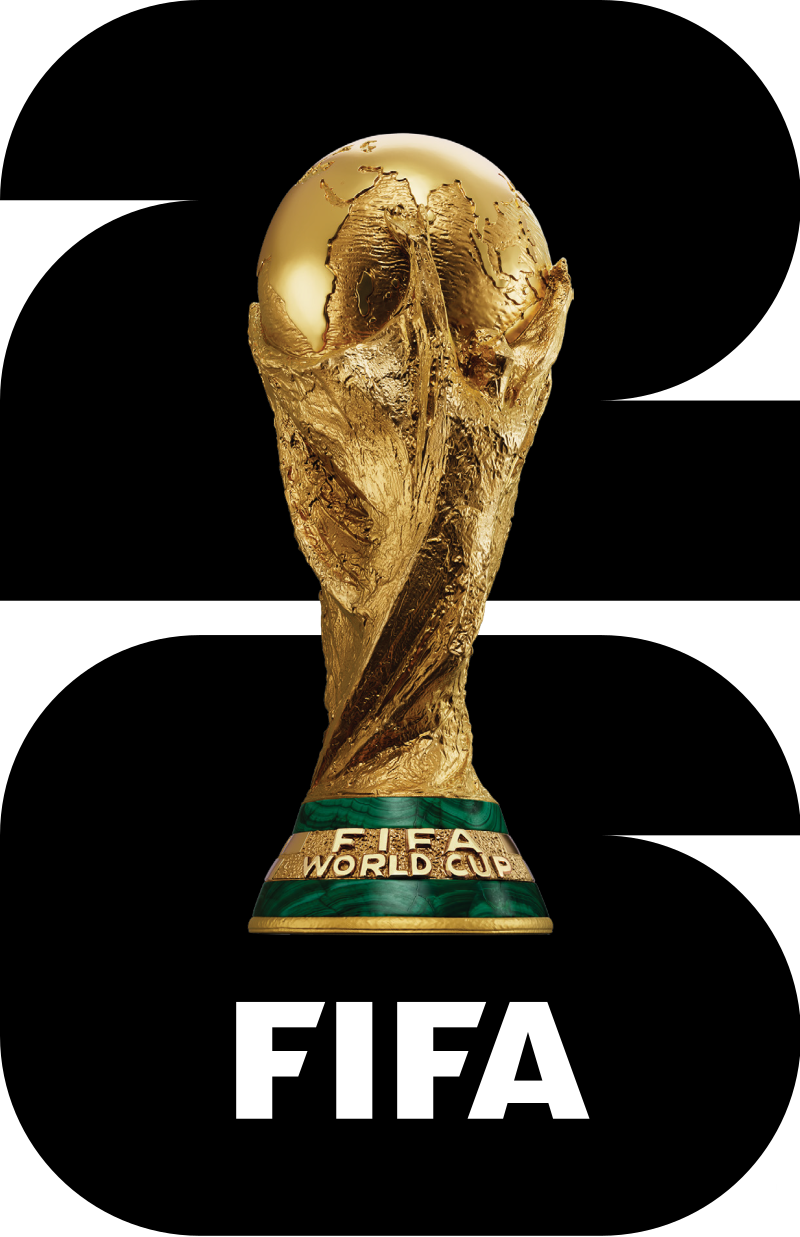 FIFA Fussball-Weltmeisterschaft 2026
FIFA Fussball-Weltmeisterschaft 2026
 FIFA-Konföderationen-Pokal 2013
FIFA-Konföderationen-Pokal 2013
 FIFA-Konföderationen-Pokal 2017
FIFA-Konföderationen-Pokal 2017
 Women's Soccer World Cup 1991
Women's Soccer World Cup 1991
 Women's Soccer World Cup 1995
Women's Soccer World Cup 1995
 Women's Soccer World Cup 1999
Women's Soccer World Cup 1999
 Women's Soccer World Cup 2003
Women's Soccer World Cup 2003
 Women's Soccer World Cup 2007
Women's Soccer World Cup 2007
 Women's Soccer World Cup 2011
Women's Soccer World Cup 2011
 Women's Soccer World Cup 2015
Women's Soccer World Cup 2015
 Women's Soccer World Cup 2019
Women's Soccer World Cup 2019
 Oceania Football Confederation
Oceania Football Confederation
 Switzerland
Switzerland
 Zurich
Zurich

 Sport
Sport
 (F)Football Women's World Cup
(F)Football Women's World Cup

 Sport
Sport
 (F)International soccer leagues
(F)International soccer leagues

 Sport
Sport
 (F)AFC Champions League
(F)AFC Champions League

 Sport
Sport
 (F)CAF Champions League
(F)CAF Champions League

 Sport
Sport
 (F)CONCACAF Champions League
(F)CONCACAF Champions League

 Sport
Sport
 (F)Copa Libertadores
(F)Copa Libertadores

 Sport
Sport
 (F)UEFA Champions League
(F)UEFA Champions League

 Sport
Sport
 (F)European football championship
(F)European football championship

 Sport
Sport
 (F)FIFA U-20 World Cup
(F)FIFA U-20 World Cup

 Sport
Sport
 (F)FIFA Confederations Cup
(F)FIFA Confederations Cup

 Sport
Sport
 (F)Soccer Asia Cup
(F)Soccer Asia Cup

 Sport
Sport
 (F)African Cup of Nations
(F)African Cup of Nations
 UEFA Champions League 2015/16
UEFA Champions League 2015/16
 UEFA Champions League 2016/17
UEFA Champions League 2016/17
 UEFA Champions League 2017/18
UEFA Champions League 2017/18
 UEFA Champions League 2018/19
UEFA Champions League 2018/19
 UEFA Champions League 2019/20
UEFA Champions League 2019/20
 UEFA Europa League 2017/18
UEFA Europa League 2017/18
 UEFA Europa League 2018/19
UEFA Europa League 2018/19
 UEFA Europa League 2019/20
UEFA Europa League 2019/20
 UEFA Nations League
UEFA Nations League
 Union of European Football Associations
Union of European Football Associations

 Important International Organizations
Important International Organizations

Die Fédération Internationale de Football Association (deutsch Internationaler Verband des Association Football), kurz FIFA oder Fifa, ist ein privater Verband, der „die Kontrolle des Association Football in all seinen Formen“ zum Zweck hat.[3] Der Weltfußballverband ist ein gemeinnütziger Verein im Sinne der Artikel 60 ff. des Schweizerischen Zivilgesetzbuches mit Sitz in Zürich und im Handelsregister eingetragen.[4][5][6] Die FIFA muss als nicht steuerbefreiter Verein im Kanton Zürich eine reduzierte Gewinnsteuer von 4 % entrichten.[1][2]
Die FIFA erwirtschaftet in ihrer aktuellen Vierjahresertragsperiode 5,66 Milliarden Dollar, die zu 89 % aus der Vermarktung der von ihr organisierten Männer-Fußball-WM stammen. Darüber hinaus organisiert sie auch die Frauen-Fußball-WM und zahlreiche weitere Turniere. Ihr Präsident ist Gianni Infantino.
国际足球联合会(法语:Fédération Internationale de Football Association;英语:International Federation of Association Football[注 1]),简称国际足联(FIFA),是管理英式足球、室内五人足球和沙滩足球的国际体育组织,下辖211个会员协会。总部设于瑞士苏黎世。现任主席为吉安尼·因凡蒂诺。国际足联负责组织世界重大足球赛事,当中最著名的是4年举行一次的世界杯。[3]
国際サッカー連盟(こくさいサッカーれんめい、仏: Fédération Internationale de Football Association)は、サッカー(アソシエーション式フットボール)の国際競技連盟であり、スイスの法律に基づいた自立法人である。略称はFIFA(フランス語発音: [fifa] フィファ、英語発音: [ˈfiːfə] フィーファ)。本部はスイスのチューリッヒに置かれている。
2018年時点で全211の国内競技連盟が加盟し[1]、国際競技連盟としては世界最大である[3]。FIFAワールドカップ・FIFA女子ワールドカップの主催が、もっとも大きな任務となっている。
The Fédération Internationale de Football Association[a] (FIFA /ˈfiːfə/ FEE-fə; French for International Federation of Association Football; Spanish: Federación Internacional de Fútbol Asociación; German: Internationaler Verband des Association Football) is a non-profit organization which describes itself as an international governing body of association football, fútsal, beach soccer, and efootball. It is the highest governing body of football.
FIFA was founded in 1904[3] to oversee international competition among the national associations of Belgium, Denmark, France, Germany, the Netherlands, Spain, Sweden, and Switzerland. Headquartered in Zürich, its membership now comprises 211 national associations. Member countries must each also be members of one of the six regional confederations into which the world is divided: Africa, Asia, Europe, North & Central America and the Caribbean, Oceania, and South America.
Today, FIFA outlines a number of objectives in the organizational Statues, including growing football internationally, providing efforts to ensure football is accessible to everyone, and advocating for integrity and fair play.[4] FIFA is responsible for the organization and promotion of football's major international tournaments, notably the World Cup which commenced in 1930 and the Women's World Cup which commenced in 1991. Although FIFA does not solely set the rules of football, that being the responsibility of the International Football Association Board of which FIFA is a member, it applies and enforces the rules across all FIFA competitions.[5] All FIFA tournaments generate revenue from sponsorship; in 2018, FIFA had revenues of over US $4.6 billion, ending the 2015–2018 cycle with a net positive of US$1.2 billion, and had cash reserves of over US$2.7 billion.[6]
Reports by investigative journalists have linked FIFA leadership with corruption, bribery, and vote-rigging related to the election of FIFA president Sepp Blatter and the organization's decision to award the 2018 and 2022 World Cups to Russia and Qatar, respectively. These allegations led to the indictments of nine high-ranking FIFA officials and five corporate executives by the U.S. Department of Justice on charges including racketeering, wire fraud, and money laundering. On 27 May 2015, several of these officials were arrested by Swiss authorities, who were launching a simultaneous but separate criminal investigation into how the organization awarded the 2018 and 2022 World Cups. Those among these officials who were also indicted in the U.S. are expected to be extradited to face charges there as well.[7][8][9] Many officials were suspended by FIFA's ethics committee including Sepp Blatter[10] and Michel Platini.[11] In early 2017 reports became public about FIFA president Gianni Infantino attempting to prevent the re-elections[12] of both chairmen of the ethics committee, Cornel Borbély and Hans-Joachim Eckert, during the FIFA congress in May 2017.[13][14] On 9 May 2017, following Infantino's proposal,[15] FIFA Council decided not to renew the mandates of Borbély and Eckert.[15] Together with the chairmen, 11 of 13 committee members were removed.[16]
La Fédération internationale de football association2 (souvent désignée par l'acronyme FIFA) est la fédération sportive internationale du football, du futsal et du football de plage. Association des fédérations nationales fondée le 21 mai 1904 à Paris, elle a pour vocation de gérer et de développer le football dans le monde. La Coupe du monde de football est créée en 1924 par Jules Rimet3, président de la fédération internationale de 1920 à 1954. Le terme Football Association est le nom originel du football, utilisé pour le distinguer des autres sports de ballon.
Fondée par les fédérations d'Allemagne, de Belgique, du Danemark, d'Espagne, de France, des Pays-Bas, de Suède et de Suisse, elle compte au 13 mai 2016 211 associations nationales affiliées à travers le monde, qui doivent être reconnues par l'une des six confédérations continentales. Son siège est situé depuis 1932 à Zurich, en Suisse.
Bien qu'étant officiellement une association à but non lucratif, la FIFA brasse un chiffre d'affaires très important du fait de l'organisation des compétitions et de leur sponsoring. En 2013, la FIFA génère 1,3 milliard de dollars de chiffre d'affaires, et dispose de réserves évaluées à 1,4 milliard de dollars4. La FIFA est chargée de l'organisation des grands tournois mondiaux, et notamment des Coupes du monde masculines, depuis le 13 juillet 1930, et féminines, depuis le 30 novembre 1991.
Après plusieurs années de rumeurs et d'enquêtes de journalistes sur les affaires financières au sein de la FIFA, notamment autour de l'attribution de l'organisation des Coupes du monde de 2018 et 2022 à la Russie et au Qatar, une enquête lancée par le département de la Justice des États-Unis pour des faits de corruption aboutit à un grand scandale en 2015, à la suite duquel le président Sepp Blatter, le 2 juin 2015, trois jours après sa réélection pour un cinquième mandat, annonce qu'il convoque un congrès extraordinaire, prévu en février 2016, afin de remettre son mandat de président à disposition. Le 8 octobre 2015, la commission d'éthique de la FIFA suspend Sepp Blatter de manière provisoire, pendant 90 jours5. Le 21 décembre 2015, la commission suspend Sepp Blatter pour 8 ans6. Cette suspension est ramenée à six ans le 24 février 2016, peu avant l'élection de son successeur, Gianni Infantino, le 26 février 2016.
La Fédération Internationale de Football Association (in italiano "Federazione internazionale di calcio"[Nota 1]), più nota con l'acronimo FIFA, è la federazione internazionale che governa gli sport del calcio, del calcio a 5 e del beach soccer. La sua sede si trova a Zurigo, in Svizzera, e il presidente è Gianni Infantino, eletto nel 2016.
La federazione fu fondata a Parigi il 21 maggio 1904 e si occupa dell'organizzazione di tutte le manifestazioni intercontinentali degli sport sopraccitati, tra le quali la più importante è sicuramente il Campionato mondiale di calcio, che premia il vincitore con il trofeo della Coppa del Mondo. Tale torneo viene disputato ogni quattro anni dal 1930, eccetto che per il 1942 e il 1946 a causa della Seconda guerra mondiale, e la federazione ha il compito di scegliere il paese organizzatore che ospita la fase finale della manifestazione.
La Fédération Internationale de Football Association2 (en español: Federación Internacional de Fútbol Asociación),3 universalmente conocida por sus siglas FIFA, es la institución que gobierna las federaciones de fútbol en todo el planeta. Se fundó el 21 de mayo de 1904 y tiene su sede en Zúrich, Suiza. Forma parte del IFAB, organismo encargado de modificar las reglas del juego. Además, la FIFA organiza la Copa Mundial de Fútbol, los otros campeonatos del mundo en sus distintas categorías, ramas y variaciones de la disciplina, y los Torneos Olímpicos a la par del COI.
La FIFA agrupa 211 asociaciones o federaciones de fútbol de distintos países, contando con 17 países afiliados más que la Organización de las Naciones Unidas, tres menos que la Asociación Internacional de Federaciones de Atletismo y dos menos que la Federación Internacional de Baloncesto.45
Междунаро́дная федера́ция футбо́ла[1] (фр. Fédération Internationale de Football Association, сокращённо FIFA, в русской транслитерации — ФИФА́) — главная футбольная организация, являющаяся крупнейшим международным руководящим органом в футболе, мини-футболе и пляжном футболе. Штаб-квартира ФИФА находится в швейцарском городе Цюрихе.
Под эгидой ФИФА проходят все футбольные турниры всемирного масштаба, в числе которых чемпионат мира ФИФА, аналогичный турнир среди женщин, молодёжные и юношеские турниры, Кубок конфедераций и клубный чемпионат мира.
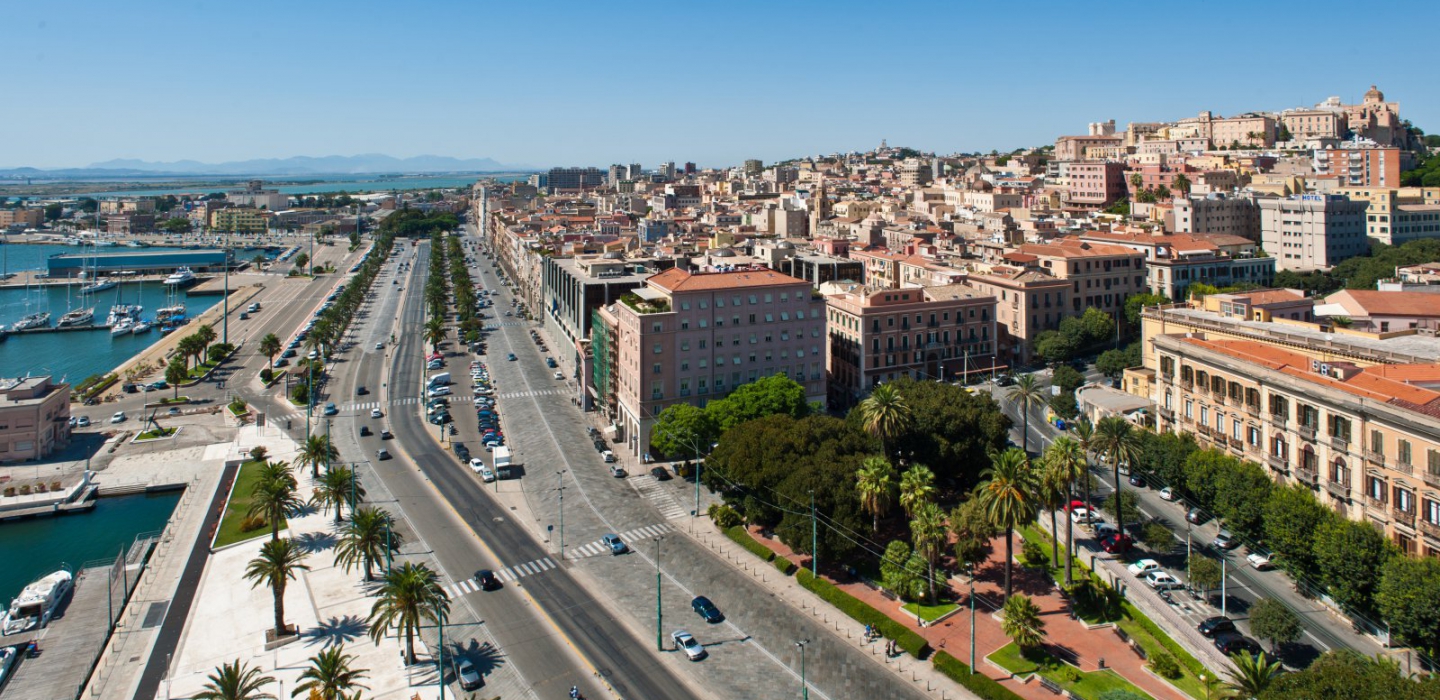

 Architecture
Architecture
 Eurovision Song Contest,ESC
Eurovision Song Contest,ESC
 FIFA Fussball-Weltmeisterschaft 1990
FIFA Fussball-Weltmeisterschaft 1990
 UEFA European Championship 2020
UEFA European Championship 2020

 History
History
 Italy
Italy

 Lazio
Lazio
 Rom
Rom
 Olympic Summer Games
Olympic Summer Games
 1960 Summer Olympics
1960 Summer Olympics
 Silk road
Silk road

 Cities founded by the Romans
Cities founded by the Romans

Rom (lateinisch Rōma; italienisch Roma [ˈroːma]), amtlich Roma Capitale, ist die Hauptstadt Italiens.[2] Mit etwa drei Millionen Einwohnern im Stadtgebiet bzw. rund vier Millionen Einwohnern in der Agglomeration ist sie die größte Stadt Italiens. Rom liegt in der Region Latium an den Ufern des Flusses Tiber.
Rom wurde erstmals im 1. Jahrhundert v. Chr. vom Dichter Tibull[3] Ewige Stadt genannt. Diese Bezeichnung, ursprünglich eine Antonomasie, wurde zu einem Ehrennamen für die Stadt wegen der Bedeutung in ihrer bis heute drei Jahrtausende umspannenden Geschichte.
Sie ist heute Verwaltungssitz der Region Latium und der Metropolitanstadt Rom, bis 2015 Provinz Rom. Innerhalb der Stadt bildet der unabhängige Staat der Vatikanstadt eine Enklave. Der Vatikan ist der Sitz des Papstes, das heißt des Bischofs von Rom und Oberhaupts der römisch-katholischen Kirche sowie des Heiligen Stuhls. Zudem ist Rom seit 1834 Sitz des Malteser-Ritterordens, der ein eigenständiges (jedoch nichtstaatliches) Völkerrechtssubjekt ist, sowie der UNO-Unterorganisationen FAO, IFAD und WFP.
Rom ist außerordentlich reich an bedeutenden Bauten und Museen und Ziel zahlreicher Touristen. Die Altstadt von Rom, der Petersdom und die Vatikanstadt wurden von der UNESCO im Jahr 1980 zum Weltkulturerbe erklärt.[4]
In einer Rangliste der Städte nach ihrer Lebensqualität belegte Rom im Jahre 2018 den 57. Platz unter 231 untersuchten Städten weltweit.[5]
罗马(意大利语:Roma)是意大利首都及全国政治、经济、文化和交通中心,是世界著名的历史文化名城,古罗马文明的发祥地,因建城历史悠久并保存大量古迹而被昵称为“永恒之城”[1][2]。其位于意大利半岛中西部,台伯河下游平原地的七座小山丘上,市中心面积有1200多平方公里。罗马同时是全世界天主教会的中枢,拥有700多座教堂与修道院、7所天主教大学,市内的梵蒂冈城是罗马主教即天主教会教宗及圣座的驻地。罗马与佛罗伦萨同为意大利文艺复兴中心[3],现今仍保存有相当丰富的文艺复兴与巴洛克风貌;1980年,罗马的历史城区被列为世界文化遗产[4]。
ローマ(伊: Roma、羅: Roma)は、イタリアの首都。欧州有数の世界都市であり、ラツィオ州の州都、ローマ県のコムーネの一つで、ローマ県の県都でもある。英語とフランス語の表記は「Rome」。
イタリアの首都で政治、経済、文化の中心地である。当市に囲まれるようにローマ教皇の居住するバチカン市国があり、そこは全世界のカトリック教徒にとっての中心地で、現在は外国であるが歴史・宗教・文化的にはローマ市地域と密接な関わりがある。そして昔のローマの大国さを表した「ローマは一日にして成らず」という諺もある。また、領土を持たないマルタ騎士団の本部、マルタ宮殿がコンドッティ通り68にあり、治外法権が認められている。
2014年現在の人口は約286万人で、イタリアで最も人口が多い都市である。2010年の都市的地域の人口では271万人であり、世界128位である[4]。 かつてのローマ帝国の首都であったため西洋文明圏を代表する都市のひとつであり、カトリック教会の中枢であり、そしてまたその美しさから『永遠の都』と称される。
2014年、アメリカのシンクタンクが公表したビジネス、人材、文化、政治などを対象とした総合的な世界都市ランキングにおいて、世界第32位の都市と評価されており、イタリアの都市では第1位であった[5]。
観光都市としての側面もあり、2012年には7,800,000人の観光客が訪れた[6]。後述の「観光」、「聖地として」も参照。
Rome (Italian: Roma  i[ˈroːma]; Latin: Roma [ˈroːma]) is the capital city of Italy and a special comune (named Comune di Roma Capitale). Rome also serves as the capital of the Lazio region. With 2,872,800 residents in 1,285 km2 (496.1 sq mi),[1] it is also the country's most populated comune. It is the fourth-most populous city in the European Union by population within city limits. It is the centre of the Metropolitan City of Rome, which has a population of 4.3 million residents.[2] Rome is located in the central-western portion of the Italian Peninsula, within Lazio (Latium), along the shores of the Tiber. The Vatican City is an independent country inside the city boundaries of Rome, the only existing example of a country within a city: for this reason Rome has been often defined as capital of two states.[3][4]
i[ˈroːma]; Latin: Roma [ˈroːma]) is the capital city of Italy and a special comune (named Comune di Roma Capitale). Rome also serves as the capital of the Lazio region. With 2,872,800 residents in 1,285 km2 (496.1 sq mi),[1] it is also the country's most populated comune. It is the fourth-most populous city in the European Union by population within city limits. It is the centre of the Metropolitan City of Rome, which has a population of 4.3 million residents.[2] Rome is located in the central-western portion of the Italian Peninsula, within Lazio (Latium), along the shores of the Tiber. The Vatican City is an independent country inside the city boundaries of Rome, the only existing example of a country within a city: for this reason Rome has been often defined as capital of two states.[3][4]
Rome's history spans 28 centuries. While Roman mythology dates the founding of Rome at around 753 BC, the site has been inhabited for much longer, making it one of the oldest continuously occupied sites in Europe.[5] The city's early population originated from a mix of Latins, Etruscans, and Sabines. Eventually, the city successively became the capital of the Roman Kingdom, the Roman Republic and the Roman Empire, and is regarded as the birthplace of Western civilisation and by some as the first ever metropolis.[6] It was first called The Eternal City (Latin: Urbs Aeterna; Italian: La Città Eterna) by the Roman poet Tibullus in the 1st century BC, and the expression was also taken up by Ovid, Virgil, and Livy.[7][8] Rome is also called the "Caput Mundi" (Capital of the World). After the fall of the Western Empire, which marked the beginning of the Middle Ages, Rome slowly fell under the political control of the Papacy, which had settled in the city since the 1st century AD, until in the 8th century it became the capital of the Papal States, which lasted until 1870. Beginning with the Renaissance, almost all the popes since Nicholas V (1447–1455) pursued over four hundred years a coherent architectural and urban programme aimed at making the city the artistic and cultural centre of the world.[9] In this way, Rome became first one of the major centres of the Italian Renaissance,[10] and then the birthplace of both the Baroque style and Neoclassicism. Famous artists, painters, sculptors and architects made Rome the centre of their activity, creating masterpieces throughout the city. In 1871, Rome became the capital of the Kingdom of Italy, which, in 1946, became the Italian Republic.
Rome has the status of a global city.[11][12][13] In 2016, Rome ranked as the 14th-most-visited city in the world, 3rd most visited in the European Union, and the most popular tourist attraction in Italy.[14] Its historic centre is listed by UNESCO as a World Heritage Site.[15] Monuments and museums such as the Vatican Museums and the Colosseum are among the world's most visited tourist destinations with both locations receiving millions of tourists a year, and the city hosted the 1960 Summer Olympics. Rome is the seat of several specialized agencies of the United Nations, such as the Food and Agriculture Organization (FAO), the World Food Programme (WFP) and the International Fund for Agricultural Development (IFAD). The city hosts the headquarters of many international business companies, such as Eni, Enel, TIM, Leonardo S.p.A., and national and international banks such as Unicredit and BNL. Its business district, called EUR, is the base of many companies involved in the oil industry, the pharmaceutical industry, and financial services. Rome is also an important fashion and design centre thanks to renowned international brands centered in the city. Rome's Cinecittà Studios have been the set of many Academy Award–winning movies.
Roma (AFI: /ˈroma/[5], pronuncia[?·info]) è la capitale della Repubblica Italiana, nonché capoluogo dell'omonima città metropolitana e della regione Lazio. La città è dotata di un ordinamento amministrativo speciale, denominato Roma Capitale, disciplinato da una legge dello Stato.[6]
Con 2 869 322 abitanti è il comune più popoloso d'Italia e il quarto dell'Unione europea,[3] mentre con 1 287,36 km² è il comune più esteso d'Italia e la quinta città più estesa d'Europa dopo Mosca, Istanbul, Londra e San Pietroburgo. È inoltre la città europea con la maggiore superficie di aree verdi[7].
Fondata secondo la tradizione il 21 aprile del 753 a.C. (sebbene scavi recenti nel Lapis Niger farebbero risalire la fondazione a 2 secoli prima[8][9]), nel corso dei suoi tre millenni di storia è stata la prima metropoli dell'umanità,[10] cuore pulsante di una delle più importanti civiltà antiche, che influenzò la società, la cultura, la lingua, la letteratura, l'arte, l'architettura, la filosofia, la religione, il diritto e i costumi dei secoli successivi. Luogo di origine della lingua latina, fu capitale dell'Impero romano che estendeva il suo dominio su tutto il bacino del Mediterraneo e gran parte dell'Europa, dello Stato Pontificio, sottoposto al potere temporale dei papi e del Regno d'Italia (dal 1871 al 1946). Per antonomasia, è definita l'Urbe, Caput Mundi e Città eterna.
Il suo centro storico, delimitato dal perimetro delle mura aureliane, sovrapposizione di testimonianze di quasi tre millenni è espressione del patrimonio storico, artistico e culturale del mondo occidentale europeo[11] e, nel 1980, insieme alle proprietà extraterritoriali della Santa Sede nella città, è stato inserito nella lista dei Patrimoni dell'umanità dell'UNESCO, provvedimento esteso nel 1990 ai territori compresi all'interno delle mura gianicolensi, edificate per volere di papa Urbano VIII.[12][13]
Roma, cuore della cristianità cattolica, è l'unica città al mondo ad ospitare al proprio interno un intero Stato, l'enclave della Città del Vaticano:[14] per tale motivo è spesso definita capitale di due Stati.[15][16]
Rome (en italien : Roma, prononcé [ˈroˑma]) est la capitale de l'Italie depuis 1871. Située au centre-ouest de la péninsule Italienne, près de la mer Tyrrhénienne, elle est également la capitale de la région du Latium, et fut celle de l'Empire romain durant 357 ans. En 2016, elle compte 2 877 215 habitants établis sur 1 285 km2, ce qui fait d'elle la commune la plus peuplée d'Italie et la troisième plus étendue d'Europe après Moscou et Londres1. Son aire urbaine recense 4 356 403 habitants en 20162,3. Elle présente en outre la particularité de contenir un État enclavé dans son territoire : la cité-État du Vatican (Stato della Città del Vaticano), dont le pape est le souverain. C'est le seul exemple existant d'un État à l'intérieur d'une ville.
L'histoire de Rome s'étend sur plus de vingt-huit siècles, depuis sa fondation mythique par Romulus en 753 av. J.-C. jusqu'à son rôle actuel de capitale de la république italienne. Second berceau de la civilisation occidentale après Athènes, la ville fut successivement le centre de la monarchie romaine, de la république romaine (509 av. J.-C. – 27 av. J.-C.), puis de l'Empire romain (27 av. J.-C. – 330). Durant cette période, où nait la célèbre expression proverbiale « tous les chemins mènent à Rome », la ville aurait compté entre un et deux millions d'habitants et domine l'Europe, l'Afrique du Nord et le Moyen-Orient tant militairement que culturellement, diffusant dans ces territoires la langue latine, ses arts et techniques ainsi que la religion chrétienne. Depuis le Ier siècle elle abrite le siège de l'Église catholique romaine, au sein des États pontificaux (752-1870) puis de la Cité du Vatican.
Considérablement agrandie par de grands travaux sous Jules César et surtout sous Auguste, la ville est partiellement détruite lors du Grand incendie de Rome - le Circus Maximus notamment. À partir du XVe siècle, presque tous les papes depuis Nicolas V (1447-1455) perpétuent la tradition de l'architecture romaine et ambitionnent de faire de Rome le principal centre culturel et artistique de l'Occident. La ville devient l'un des foyers de la Renaissance italienne, avec Florence et Venise, et donne naissance au style baroque - dont témoigne encore son centre historique, classé par l'UNESCO comme site du patrimoine mondial4. Des artistes comme Michel-Ange, Raphaël ou Le Bernin s'y installent et produisent des œuvres telles que la basilique Saint-Pierre, la chapelle Sixtine, la fontaine de Trevi, le Capitole ou les Chambres de Raphaël. Au XIXe siècle, Rome est le symbole de l'unité italienne et devient la capitale du Royaume d'Italie, puis de la République après la Seconde Guerre mondiale.
Ville globale, Rome est la troisième destination touristique la plus visitée d'Europe derrière Londres et Paris5. La Ville Éternelle est l'une des plus belles villes du monde, et fréquentée par les touristes depuis le XVIIIe siècle. Le siège de la papauté et le pèlerinage de Rome en font un lieu éminent pour les chrétiens du monde entier depuis des siècles. Les musées du Vatican et le Colisée sont parmi les sites les plus fréquentés. Rome est aussi l'un des plus grands sites archéologiques du monde, et compte également de nombreux ponts et fontaines, 900 églises, ainsi qu'un grand nombre de musées et d'universités. Outre le tourisme, l'économie de la « Ville Éternelle » est également orientée vers les nouvelles technologies, les médias et les télécommunications depuis les années 2000. Bâtie sur sept collines, la ville se situe près de l'embouchure du Tibre et est divisée en vingt-deux rioni. Rome a aussi organisé les Jeux olympiques d'été en 1960. Rome n'est jumelée qu'avec une seule autre ville, Paris, ce qui est vrai dans l'autre sens, avec ce slogan : « Seul Paris est digne de Rome, seule Rome est digne de Paris ».
Roma es una ciudad italiana de 2 877 215 habitantes,23 capital de la región del Lacio y de Italia. Es el municipio más poblado de Italia y es la cuarta ciudad más poblada de la Unión Europea.4 Por antonomasia se la conoce desde fines de la Antigüedad como la Urbe. También es llamada "La Ciudad Eterna" (en italiano: Città Eterna).
En el transcurso de su historia, que abarca tres milenios, llegó a extender sus dominios sobre toda la cuenca del Mediterráneo y gran parte de Europa. Como capital del Imperio romano, se constituyó en una de las primeras grandes metrópolis de la humanidad, centro de una de las civilizaciones antiguas más importantes. Influyó en la sociedad, la cultura, la lengua, la literatura, el arte, la arquitectura, la filosofía, la religión, el derecho y la moral de los siglos sucesivos.
Es la ciudad con la más alta concentración de bienes históricos y arquitectónicos del mundo;5 su centro histórico delimitado por el perímetro que marcan las murallas aurelianas, superposición de huellas de tres milenios, es la expresión del patrimonio histórico, artístico y cultural del mundo occidental europeo.6 En 1980, junto a las propiedades extraterritoriales de la Santa Sede que se encuentran en la ciudad y la Basílica de San Pablo Extramuros, fue incluida en la lista del Patrimonio de la Humanidad de la Unesco.78
Roma es el corazón geográfico de la religión católica y destino de peregrinación (vías romeas) y también la única ciudad del mundo que tiene en su interior un Estado extranjero: el enclave de la Ciudad del Vaticano, que se encuentra bajo el poder temporal del papa.9 Por tal motivo se le ha conocido también como la capital de dos Estados.
Рим (итал. Roma [ˈroːma]) — столица и крупнейший город Италии. Административный центр области Лацио и провинции Рим. Расположен на реке Тибр.
Рим — один из старейших городов мира, древняя столица Римской империи. Ещё в Античности (III век н. э.) Рим стали часто называть Вечным (лат. Roma Aeterna). Одним из первых так назвал Рим римский поэт Альбий Тибулл (I век до н. э.) в своей второй элегии. Представления о «вечности» Рима во многом сохранились и после падения древнеримской цивилизации, принеся соответствующий эпитет в современные языки.
Также Рим называют «городом на семи холмах». Первоначально поселения располагались на холме Палатине, впоследствии были заселены соседние холмы: Капитолий и Квиринал. Несколько позже поселения появились на последних четырёх холмах (Целие, Авентине, Эсквилине и Виминале).
 FIFA Fussball-Weltmeisterschaft 1990
FIFA Fussball-Weltmeisterschaft 1990

 History
History
 Italy
Italy

 Lombardia
Lombardia
 Mailand
Mailand
 2026 Winter Olympics
2026 Winter Olympics
 Silk road
Silk road

 World Heritage
World Heritage

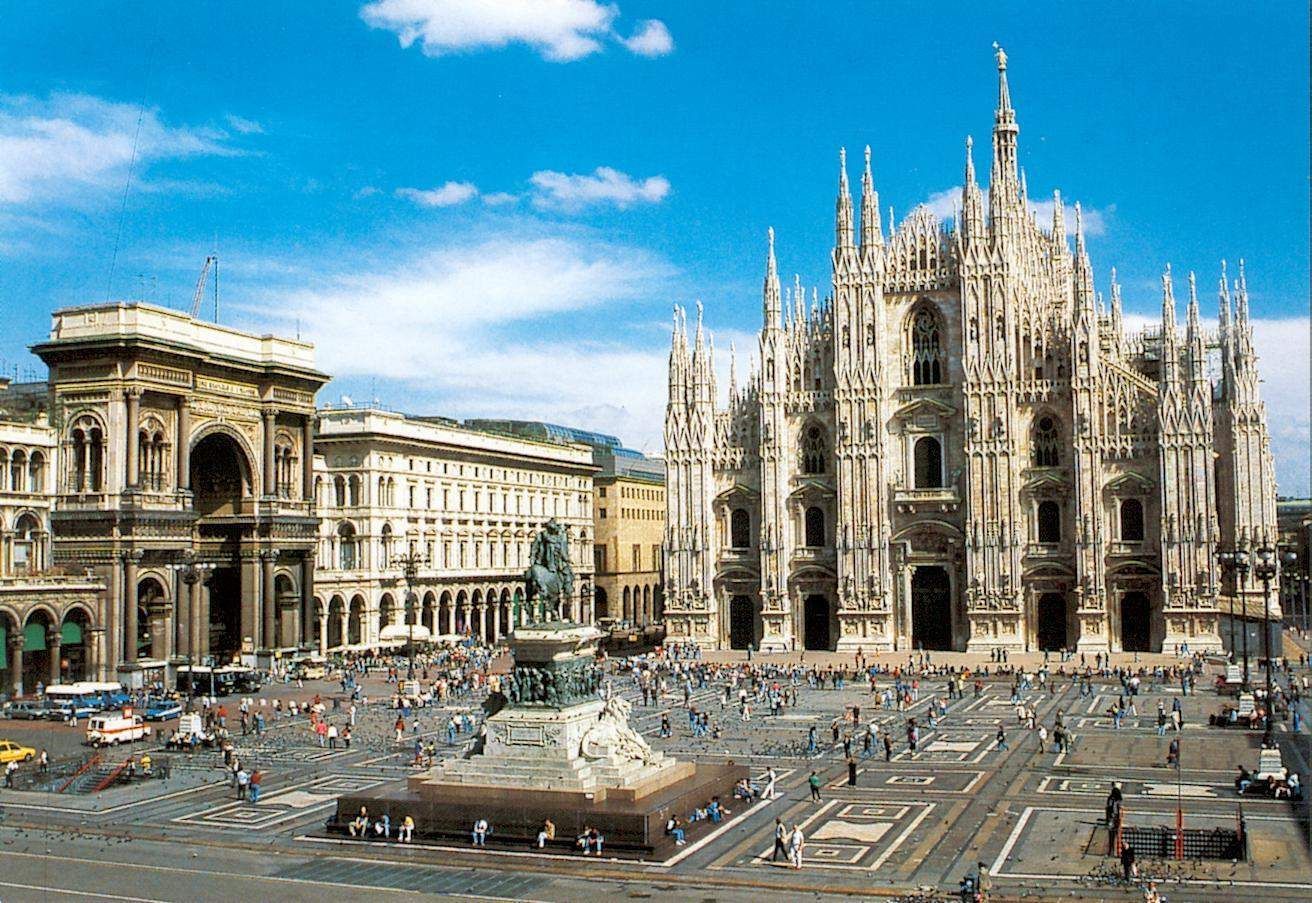
Mailand (italienisch Milano [miˈlaːno], lombardisch Milan [miˈlã(ŋ)],[2] lateinisch Mediolanum) ist mit 1,3 Millionen Einwohnern die zweitgrößte Stadt Italiens und Hauptstadt der Region Lombardei sowie der Metropolitanstadt Mailand. Die Metropolregion war 2006 mit 7,4 Millionen Einwohnern der größte italienische Ballungsraum.[3]
Einst eine Gründung keltischer Siedler, erlebte die Stadt im Römischen Reich einen raschen Aufschwung. Mailand unterstand in seiner Geschichte dem Einfluss deutscher, französischer und österreichischer Kaiser und wuchs nach der Einigung Italiens zur größten Industriestadt des Landes. Sie ist heute die führende Kultur-, Medien- und Modemetropole Italiens, eine Universitätsstadt und ein internationaler Finanzplatz als Sitz der Italienischen Börse. Sie beherbergt ein Weltkulturerbe, historisch bedeutsame Bauwerke und vielfältige Kunstschätze, die mehrere Millionen Touristen pro Jahr anziehen. Die Messestadt ist dank ihrer verkehrsgünstigen Lage in der oberitalienischen Po-Ebene ein Knotenpunkt des Schienen- und Autobahnnetzes und zweitgrößtes Luftfahrtdrehkreuz Italiens mit drei internationalen Flughäfen.
米兰(意大利语:Milano)是欧洲国家意大利的西北方大城,也是米兰省的省会和伦巴第大区的首府,位于意大利人口最密集和发展程度最高的伦巴第平原上。它是欧洲南方的重要交通要点,历史相当悠久,以观光、时尚与建筑景观闻名于世。米兰目前有132万居民,但如果将郊区的居住人口计算在内,则超过810万人,是欧洲三大都会区之一。总面积约有1,982平方公里 ,每平方公里超过2,000人居住[2] 。目前米兰市长为Giuliano Pisapia。
市区生产总值占意大利国内生产总值的4.8%,这个地区也被称为蓝香蕉(Blue Banana),是欧洲人口最密集与工业最发达的地区[3] 。
米兰最初被凯尔特人当中的因苏布雷人(Insubres)称为Medhlan[4]。后来罗马人在西元前222年征服该地后,称它为Mediolanum。米兰因此成为罗马帝国最繁荣的地区之一,并在286年至402年成为西罗马帝国的首都。米兰在中世纪时期则被称为Mailand,德语目前依然使用这个名字,它来自于凯尔特语的Mid-lan,意为“平原中心”。拿破仑于1796年占领米兰,并于1805年将米兰当作意大利王国的首都[5][6] 。米兰随后成为受到奥地利帝国所控制的伦巴第-威尼西亚王国首都,并于1859年成为萨丁尼亚王国的一部份,逐渐隶属于意大利王国。
米兰是一个国际性及国际化的城市,有15.2%的人口出生于国外[7]。这个城市依然是欧洲主要的运输和工业中心,米兰是欧洲联盟当中第10重要的商业和金融中心(2009年)[8],其经济购买力(参见米兰经济 )位居世界第26位[9]。在2008年,米兰都会区的国内生产总值位居欧洲第七位[10]。米兰省2007年的人均国内生产总值大约为€40,000(为欧盟27国平均水平的161%),是意大利人均国内生产总值最高的省份[11],城市工人平均所得位居意大利首位[11],在世界上则排名第26位[12]。此外对于外籍员工而言,米兰是世界第11昂贵的城市[13]。根据2010年一项经济学人信息社的研究显示,米兰是全球第12昂贵的居住城市[14]。据一些研究报告显示,它的经济环境位于世界第20位,也是欧洲的第10重要的商业和金融中心[15][16],拥有价值非常高的城市品牌[17]。
米兰是公认的世界时尚和设计之都,商业、工业、音乐、体育、文学、艺术及媒体皆具有全球重要影响力,也是一个主要的全球城市[18]。全市拥有丰富的文化古迹和遗产,拥有充满活力的夜生活[19][20],并具有独特的料理,例如意大利面包和意大利调味饭,耶诞节的点心巴内多内则是米兰另一个著名的特产。蒙特拿破仑大街上的时装商店举世闻名,埃马努埃莱二世长廊被认为是世界上最古老的购物中心。米兰的音乐剧特别著名,尤其是传统歌剧,也孕育出几位重要的作曲家(例如朱塞佩·威尔第),斯卡拉大剧院也相当知名。米兰也拥有一些重要的博物馆、大学、专科院校、宫殿、教堂和图书馆,例如布雷拉美术学院和斯福尔扎古堡。两支著名的足球队伍:AC米兰和国际米兰也以这座城市为根据地。米兰在最受欢迎的欧洲旅游城市中排名第52位,在2008年共有超过1,914,000名外国旅客造访[21]。这个城市曾经举办过1906年世界博览会并将于2015年再次举办世界博览会[22]。米兰2005年7月启用的RHO新展会会场占地250万平方米,展览面积46万平方米,是世界上最大的博览会场。米兰也以阿尔法·罗密欧汽车品牌和丝绸工业著称。
ミラノ(伊: Milano)は、イタリアで最大の都市圏人口を擁する都市で、ミラノ県の県都およびロンバルディア州の州都である。ヨーロッパ有数の世界都市。イタリア語のアクセントの関係でミラーノと記されることもある。英語ではミラン(英: Milan)、フランス語ではミラン(仏: Milan)、ドイツ語ではマイラント(独: Mailand)、スペイン語ではミラン(西: Milán)、ラテン語ではメディオラーヌム(羅: Mediolanum)と言う。
ミラノはイタリア全土では首都ローマに次ぎ第2位、北部イタリアにおいては最大の都市で商業、工業、金融の中心。観光地としても名高い。1982年に1,607,804人いた人口はその後ドーナツ化現象で長く減り続けたが、ここ数年はおよそ130万人前後で落ち着いている(2013年時点の人口は1,324,169人)。2015年の近郊を含む都市圏人口は約526万人であり、イタリアで最大、南ヨーロッパではスペインのマドリードに次ぐ都市圏を形成している。日本の稚内市とほぼ同緯度に位置するが、最寒月の平均気温がおよそ5℃程度と、比較的温暖。
ミラノ・コレクションなどで知られるように古くから服飾・繊維産業などファッション関連の産業が盛んな土地柄であるが、近年は航空産業や自動車産業、精密機器工業なども発達しておりイタリア最大級の経済地域を形成している。
日本の民間研究所が2016年に発表した「世界の都市総合力ランキング」では、世界31位と評価された[4]。また、アメリカのシンクタンクが2016年に発表した世界都市ランキングでは世界45位と評価された[5]。
Milan (/mɪˈlæn, mɪˈlɑːn/;[3] Italian: Milano [miˈlaːno] ( listen); Lombard: Milan [miˈlãː] (Milanese variant))[4][5] is a city in northern Italy, capital of Lombardy, and the second-most populous city in Italy after Rome, with the city proper having a population of 1,369,466 while its province-level municipality has a population of 3,238,665.[6] Its continuously built-up urban area (that stretches beyond the boundaries of the Metropolitan City of Milan) has a population estimated to be about 5,270,000 over 1,891 square kilometres (730 square miles).[7] The wider Milan metropolitan area, known as Greater Milan, is a polycentric metropolitan region that extends over central Lombardy and eastern Piedmont and which counts an estimated total population of 7.5 million, making it by far the largest metropolitan area in Italy.[8][9][10][11][12] Milan served as capital of the Western Roman Empire from 286 to 402 and the Duchy of Milan during the middle and early modern age.
listen); Lombard: Milan [miˈlãː] (Milanese variant))[4][5] is a city in northern Italy, capital of Lombardy, and the second-most populous city in Italy after Rome, with the city proper having a population of 1,369,466 while its province-level municipality has a population of 3,238,665.[6] Its continuously built-up urban area (that stretches beyond the boundaries of the Metropolitan City of Milan) has a population estimated to be about 5,270,000 over 1,891 square kilometres (730 square miles).[7] The wider Milan metropolitan area, known as Greater Milan, is a polycentric metropolitan region that extends over central Lombardy and eastern Piedmont and which counts an estimated total population of 7.5 million, making it by far the largest metropolitan area in Italy.[8][9][10][11][12] Milan served as capital of the Western Roman Empire from 286 to 402 and the Duchy of Milan during the middle and early modern age.
Milan is considered a leading alpha global city,[13] with strengths in the field of the art, commerce, design, education, entertainment, fashion, finance, healthcare, media, services, research and tourism. Its business district hosts Italy's Stock Exchange and the headquarters of national and international banks and companies. In terms of GDP, it has the third-largest economy among European cities after Paris and London, but the fastest in growth among the three, and is the wealthiest among European non-capital cities.[14][15] Milan is considered part of the Blue Banana and one of the "Four Motors for Europe."
The city has been recognized as the world’s fashion capital and the world's design capital [16] thanks to several international events and fairs, including Milan Fashion Week and the Milan Furniture Fair, which are currently among the world's biggest in terms of revenue, visitors and growth.[17][18][19] It hosted the Universal Exposition in 1906 and 2015. The city hosts numerous cultural institutions, academies and universities, with 11% of the national total enrolled students.[20] Milan is the destination of 8 million overseas visitors every year, attracted by its museums and art galleries that boast some of the most important collections in the world, including major works by Leonardo da Vinci. The city is served by a large number of luxury hotels and is the fifth-most starred in the world by Michelin Guide.[21] The city is home to two of Europe's most successful football teams, A.C. Milan and F.C. Internazionale, and one of Italy's main basketball teams, Olimpia Milano.
Milan (en italien Milano, du latin Mediolanum ; en lombard Milàn) est une ville d'Italie située au nord du pays, à proximité des Alpes. Chef-lieu de la région Lombardie, située au milieu de la plaine du Pô, Milan compte approximativement 1 369 000 habitants en 2016, ce qui en fait la deuxième ville d'Italie en nombre d'habitants. En comprenant son agglomération, elle constitue toutefois la plus grande aire urbaine du pays ; avec ses 7 123 563 d'habitants en 2009, celle-ci est la quatrième aire urbaine d'Europe, après celles de Moscou, de Paris et de Londres. Région dynamique et densément peuplée, cœur industriel et poumon financier de l'Italie, elle représente la partie méridionale de la dorsale européenne1, aussi appelée « Banane bleue ».
Fondée durant l'Antiquité par des peuples celtes, les Insubres, Milan est conquise en -222 par les Romains et sera la capitale de l'Empire romain d'Occident pendant un siècle, de 286 à 402. Elle devient durant les siècles suivants un lieu majeur du christianisme, gouverné par des comtes puis par la famille Visconti, qui en font l'une des places financières les plus importantes du Moyen Âge. De 1395 à 1796, la ville forme le Duché de Milan, fief du Saint-Empire romain germanique successivement sous la domination de la France, des Habsbourg d'Espagne et de l'Autriche, avant de rejoindre en 1859 le Royaume d'Italie. Au début du XXe siècle, Milan devient la région la plus industrielle du pays et est à l'avant-garde du processus de consolidation de la jeune nation italienne. En grande partie dévastée durant la Seconde Guerre mondiale, en raison de l'occupation nazie, la ville devient le centre de la Résistance italienne. De l'après-guerre à aujourd'hui, Milan connaît une explosion démographique et économique, attirant de nombreux travailleurs du sud de l'Italie ainsi que des étrangers, faisant d'elle l'une des villes les plus cosmopolites du pays2.
Milan est considéré comme le cœur industriel, commercial, financier et universitaire de l'Italie. Siège de la Bourse italienne, elle représente un grand pôle d'attraction pour les sièges d'entreprises, notamment dans le secteur de la mode et du design, dont Milan est l'une des capitales mondiales - elle accueille notamment l'une des principales fashion weeks et le Salon international du meuble. Elle accueille par ailleurs 185 000 étudiants – soit 11 % des étudiants en Italie –, dans des établissements tels que la prestigieuse université Bocconi. Enfin, Milan est le lieu de résidence de deux grands clubs de football européens : le Milan AC et l'Inter de Milan.
Destination touristique de premier plan, avec près de deux millions de touristes chaque année3, elle abrite un patrimoine culturel important, composé de places (la Piazza del Duomo, la Piazza Mercanti), de palais construits à la Renaissance (Palais royal de Milan, Palazzo della Ragione, Casa Panigarola), de son célèbre opéra (La Scala) et de nombreux musées. Le Château des Sforza, à proximité du Parco Sempione, en accueille plusieurs. Ces bâtiments anciens en côtoient de plus récents, comme la Galleria Vittorio Emanuele II ou la tour Pirelli. Milan est la deuxième ville italienne - après Naples - étoilée au Guide Michelin4.
Milan accueille l'Exposition universelle de 2015.
Milano (/miˈlano/ ascolta[?·info]; Milàn in dialetto milanese[6], /miˈlãː/[7]) è un comune italiano di 1 369 466 abitanti[4], capoluogo della regione Lombardia, dell'omonima città metropolitana, e centro di una delle più popolose aree metropolitane d'Europa.
Fondata intorno al 590 a.C., forse con il nome di Medhelan, nei pressi di un santuario da una tribù celtica facente parte del gruppo degli Insubri e appartenente alla cultura di Golasecca, fu conquistata dagli antichi Romani nel 222 a.C. e in seguito da loro ridenominata Mediolanum. Con il passare dei secoli accrebbe la sua importanza sino a divenire capitale dell'Impero romano d'Occidente, nel cui periodo fu promulgato l'editto di Milano, che concesse a tutti i cittadini, quindi anche ai cristiani, la libertà di onorare le proprie divinità.
In prima linea nella lotta contro il Sacro Romano Impero in età comunale, divenne prima signoria per poi essere innalzata a dignità ducale alla fine del XIV secolo, rimanendo al centro della vita politica e culturale dell'Italia rinascimentale. All'inizio del XVI secolo perse l'indipendenza a favore dell'Impero spagnolo per poi passare, quasi due secoli dopo, sotto la corona austriaca: grazie alle politiche asburgiche, Milano divenne uno dei principali centri dell'illuminismo italiano. Capitale del Regno d'Italia napoleonico, dopo la Restaurazione fu tra i più attivi centri del Risorgimento fino al suo ingresso nel Regno d'Italia sabaudo.
Principale centro economico e finanziario della penisola italiana, Milano ne guidò lo sviluppo industriale, costituendo con Torino e Genova il "Triangolo industriale", in particolar modo durante gli anni del boom economico quando la crescita industriale e urbanistica coinvolse anche le città limitrofe, creando la vasta area metropolitana milanese. In ambito culturale, Milano è il principale centro italiano dell'editoria ed è ai vertici del circuito musicale mondiale grazie alla stagione lirica del Teatro alla Scala e alla sua lunga tradizione operistica. È inoltre tra i principali poli fieristici europei e del disegno industriale, ed è considerata una delle capitali mondiali della moda.
Milán (en italiano: Milano, y en dialecto milanés: Milàn)2 es la mayor Área Metropolitana de Italia y el segundo municipio de Italia por población, capital de la Ciudad metropolitana de Milán y de la región de Lombardía. Se encuentra ubicada en la llanura padana, una de las regiones más desarrolladas de Italia. En 2008, el PIB de Lombardía, fue estimado por el INSEE en 366 mil millones de euros, el segundo de Europa después de la región de Isla de Francia.[cita requerida]
Milán, como capital económica e industrial de Italia, tiene el aspecto y las características de una metrópolis moderna: rascacielos (célebre el rascacielos Pirelli, construido en 1959), edificios de cristal y metal y grandes almacenes. Su inconmensurable patrimonio artístico es uno de los mayores de Italia y de Europa, contando con cientos de iglesias monumentales antiguas y museos tan fundamentales para la historia del arte como la Pinacoteca de Brera, uno de los mayores museos de Europa, fundada en 1809 por Napoleón Bonaparte como hermano italiano del Louvre. Destaca también la obra maestra de Leonardo da Vinci, la pintura mural "La Última Cena" y los muchos monumentos románicos (sobre todo iglesias y basílicas) que hacen de Milán la capital del primer románico, llamado también Románico lombardo.
Мила́н (итал. Milano [miˈlaːno], ломб. Milan [miˈlãː], лат. Mediolanum — в центре равнины) — главный город северной части Италии. Административный центр области Ломбардия[3], самого крупного региона Италии, и провинции Милан. Второй по величине город Италии. Имеет репутацию финансово-экономической столицы страны и одной из мировых столиц моды. Относится к глобальным городам.

 Campania
Campania
 Neapel
Neapel
 Eurovision Song Contest,ESC
Eurovision Song Contest,ESC
 FIFA Fussball-Weltmeisterschaft 1990
FIFA Fussball-Weltmeisterschaft 1990

 History
History

 International cities
International cities
 Italy
Italy
 Silk road
Silk road

 World Heritage
World Heritage

 Important port
Important port

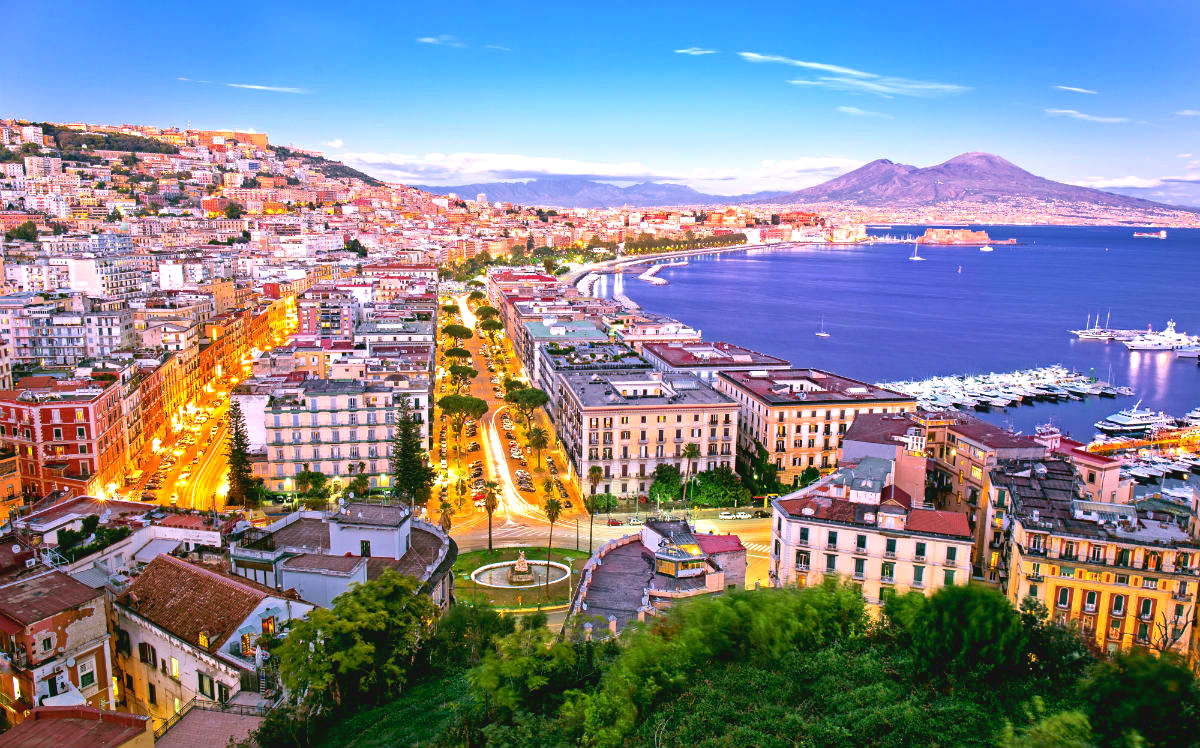
Neapel (Italienisch Napoli, Neapolitanisch Napule, altgriechisch: Νεάπολις („neue Stadt“)) ist mit knapp einer Million Einwohnern die drittgrößte Stadt Italiens. Die Hauptstadt der Region Kampanien sowie der Metropolitanstadt Neapel ist ein wirtschaftliches und kulturelles Zentrum Süditaliens. Die Metropolregion hat bis zu 4,4 Millionen Einwohner. Viele Neapolitaner sprechen das stark vom Standarditalienischen abweichende Neapolitanisch.
Die ursprüngliche griechische Siedlung trug den Namen Neapolis („Neustadt“). Später geriet sie unter römische Herrschaft. Vom Spätmittelalter bis zum 18. Jahrhundert gehörte Neapel zu den größten Städten Europas. Seine politische Geschichte ist über weite Strecken von Fremdherrschaft geprägt, zudem war es die Hauptstadt süditalienischer Reiche.
In den inneren Stadtteilen findet man zahlreiche historische Bauten und Kulturdenkmäler; 1995 wurde die gesamte Altstadt zum UNESCO-Weltkulturerbe erklärt.
那不勒斯(意大利语:Napoli;那不勒斯语:Nàpule)是意大利南部的第一大城市,坎帕尼亚大区以及那不勒斯省的首府。城市面积117平方公里,人口略低于100万。那不勒斯都会区有大约380万人口,是仅次于米兰和罗马的意大利第三大都会区[3]和欧洲第15大都会区[3]。那不勒斯地区也是意大利人口最稠密的地方之一。
那不勒斯位于那不勒斯湾的北岸,其东西两侧分别是两个火山区域:维苏威火山和坎皮佛莱格瑞火山区。因此,该市自古至今不断受到火山活动和地震的威胁。
那不勒斯始于前600年[4],以其丰富的历史、文化、艺术和美食而著称,那不勒斯历史中心被联合国教科文组织列为世界文化遗产。比萨饼起源于那不勒斯。音乐是那不勒斯文化中产生了广泛影响的的一个重要组成部分,包括发明了浪漫吉他和曼陀林,以及对歌剧和拿波里民谣的重大贡献。
在其存在的2500余年历史中,大部分时间都扮演着重要角色。该市为古希腊人所创建,在“大希腊”中扮演重要角色;后来,罗马人、诺曼人和西班牙人都在该市留下了自己的印记,也曾经是波旁王朝统治的两西西里王国的首都,直到意大利统一。今天,那不勒斯仍是繁荣的地中海港口和商业城市,高速铁路和地铁网伴随着都会区的扩张。
ナポリ(伊: Napoli (![]() 音声ファイル) ; ナポリ語: Napule)は、イタリア南部にある都市で、その周辺地域を含む人口約98万人の基礎自治体(コムーネ)。カンパニア州の州都であり、ナポリ県の県都でもある。ローマ、ミラノに次ぐイタリア第三の都市で、南イタリア最大の都市である。都市圏人口は約300万人。
音声ファイル) ; ナポリ語: Napule)は、イタリア南部にある都市で、その周辺地域を含む人口約98万人の基礎自治体(コムーネ)。カンパニア州の州都であり、ナポリ県の県都でもある。ローマ、ミラノに次ぐイタリア第三の都市で、南イタリア最大の都市である。都市圏人口は約300万人。
ナポリ湾に面した港湾都市・工業都市である[4]。古代ギリシア人によって建設された植民市に起源を持ち、13世紀以降はナポリ王国の首都として南イタリアの政治・経済の中心地となった[4]。ヴェスヴィオ火山を背景とする風光明媚な景観[4]で知られる観光都市であり、「ナポリを見てから死ね (vedi Napoli e poi muori)」[注釈 1]と謳われる[4]。旧市街地は「ナポリ歴史地区」として世界遺産に登録されている。ナポリ周辺にも、ヴェスヴィオ火山やポンペイの遺跡、カプリ島などの観光地を有する。
Naples (/ˈneɪpəlz/; Italian: Napoli [ˈnaːpoli ] ( listen), Neapolitan: Napule [ˈnɑːpələ] or [ˈnɑːpulə]; Latin: Neapolis; Ancient Greek: Νεάπολις, lit. 'new city') is the regional capital of Campania and the third-largest municipality in Italy after Rome and Milan. In 2017, around 967,069 people lived within the city's administrative limits while its province-level municipality has a population of 3,115,320 residents. Its continuously built-up metropolitan area (that stretches beyond the boundaries of the Metropolitan City of Naples) is the second or third largest metropolitan area in Italy.
listen), Neapolitan: Napule [ˈnɑːpələ] or [ˈnɑːpulə]; Latin: Neapolis; Ancient Greek: Νεάπολις, lit. 'new city') is the regional capital of Campania and the third-largest municipality in Italy after Rome and Milan. In 2017, around 967,069 people lived within the city's administrative limits while its province-level municipality has a population of 3,115,320 residents. Its continuously built-up metropolitan area (that stretches beyond the boundaries of the Metropolitan City of Naples) is the second or third largest metropolitan area in Italy.
First settled by Greeks in the second millennium BC, Naples is one of the oldest continuously inhabited urban areas in the world.[3] In the ninth century BC, a colony known as Parthenope or Παρθενόπη was established on the Island of Megaride,[4] later refounded as Neápolis in the sixth century BC.[5] The city was an important part of Magna Graecia, played a major role in the merging of Greek and Roman society and a significant cultural centre under the Romans.[6] It was capital of the Duchy of Naples (661-1139), then the Kingdom of Naples (1282 and 1816) and finally the Two Sicilies until the unification of Italy in 1861.
Between 1925 and 1936, Naples was expanded and upgraded by Benito Mussolini's government but severely damaged by Allied bombing during World War II, leading to extensive post-1945 reconstruction work.[7] Naples has experienced significant economic growth in recent decades, helped by the construction of the Centro Direzionale business district and an advanced transportation network, which includes the Alta Velocità high-speed rail link to Rome and Salerno and an expanded subway network. Naples is the third-largest urban economy in Italy, after Milan and Rome[8]. The Port of Naples is one of the most important in Europe and home of the Allied Joint Force Command Naples, the NATO body that oversees North Africa, the Sahel and Middle East.[9]
Naples' historic city centre is the largest in Europe and a UNESCO World Heritage Site, with a wide range of culturally and historically significant sites nearby, including the Palace of Caserta and the Roman ruins of Pompeii and Herculaneum. Naples is also known for its natural beauties such as Posillipo, Phlegraean Fields, Nisida, and Vesuvius.[10]
Neapolitan cuisine is synonymous with pizza, which originated in the city but it includes many other less well-known dishes and is the Italian city with the highest number of accredited stars from the Michelin Guide.[11]
The best known sports team in Naples is the Serie A club S.S.C. Napoli, two-time Italian champions who play at the San Paolo Stadium in the southwest of the city.
Naples (en italien Napoli /ˈnapoli/, en napolitain Napule) est une ville d'Italie, capitale de la région de Campanie. Elle est la troisième ville d'Italie par sa population et la dix-huitième de l'Union européenne ainsi que respectivement la deuxième (devant Rome) et la neuvième en incluant sa banlieue2. C'est aussi la deuxième plus grande cité méditerranéenne en Europe, après Barcelone.
L'histoire de Naples s'étend sur plus de vingt-huit siècles. Sous le nom de Parthénope, elle fut fondée durant l'Antiquité par la cité voisine de Cumes. Elle s'étend ensuite rapidement jusqu'à devenir un des principaux centres commerciaux, culturels, philosophiques et politiques de la Grande-Grèce puis de l'Empire romain. Après avoir été brièvement dépendante de l'Empire byzantin, elle devient autonome au sein du duché de Naples. Dès le XIIIe siècle et pour ensuite plus de 600 ans, elle devient la capitale du Royaume de Naples puis successivement du Royaume des Deux-Siciles. Elle reste alors un des principaux centres de développement économiques et technologiques d'Europe jusqu'à son annexion au Royaume d’Italie en 1860, date à laquelle elle entame un relatif déclin socio-économique.
Au cours des siècles, Naples a aussi été un des grands centres universitaires internationaux. L'Université de Naples «Frédéric-II» est la plus ancienne université laïque du monde et la 6e plus ancienne en général. Elle compte également l'Université de Naples «L'Orientale», un des plus anciens instituts de langues orientales, ainsi que l'École militaire Nunziatella, une des plus renommées d'Italie. Elle est aussi un des hauts-lieux de la musique (avec l'école napolitaine de musique, à l'origine de l'Opéra bouffe, ou la chanson napolitaine), de l'art et de l'architecture (le Baroque napolitain, l'École du Pausilippe, le Liberty napolitain, le Théâtre napolitain et la Manufacture de Capodimonte) ou encore la cuisine napolitaine (avec les pâtes et surtout la pizza napolitaine comme icône, Naples étant la ville italienne la plus étoilée au Guide Michelin3).
La ville est aussi célèbre pour son patrimoine et ses monuments. Le centre historique de Naples (avec ses fontaines, vestiges antiques, palais et plus de 1 000 églises) est ainsi le plus grand centre-ville inscrit au patrimoine mondial de l'UNESCO tandis que le parc national du Vésuve et le Miglio d'oro ont été reconnus réserve de biosphère. De plus, Naples est connue pour ses nombreuses beautés naturelles (Posillipo, Champs Phlégréens, Nisida, Vésuve, etc.), comparables à ceux de Rio de Janeiro4.
Enfin, elle abrite également la Villa Rosebery (l'une des trois résidences officielles du président de la République italienne), le siège d'un commandement interalliés et interarmées de l'OTAN, la Apple Developer Academy ainsi qu'un vaste patrimoine archéologique avec notamment la Naples souterraine ou, à proximité, la ville d'Herculanum, une ancienne banlieue5.
Napoli (AFI: /ˈnapoli/[4] ascolta[?·info]; Nàpule in napoletano, pronuncia [ˈnɑːpulə] o [ˈnɑːpələ]) è un comune italiano di 964 004 abitanti[2], capoluogo dell'omonima città metropolitana e della regione Campania.
Terzo comune in Italia per popolazione, Napoli è tra le più popolose e densamente popolate aree metropolitane dell'Unione europea.[N 1]
Fondata dai Cumani nell'VIII secolo a.C., fu tra le città più importanti della Magna Græcia[5][6], grazie al rapporto privilegiato con Atene[7], ed esercitò una notevole influenza commerciale, culturale e religiosa sulle popolazioni italiche circostanti[8] tanto da diventare sede della scuola epicurea di Filodemo di Gadara e Sirone. Dopo il crollo dell'Impero romano, nell'VIII secolo la città formò un ducato autonomo indipendente dall'Impero bizantino; in seguito, dal XIII secolo e per circa seicento anni, fu capitale del Regno di Napoli; con la Restaurazione divenne capitale del Regno delle Due Sicilie sotto i Borbone fino all'Unità d'Italia. Per motivi culturali, politici, storici e sociali è stata, dall'evo antico sino ai giorni nostri, una delle città cardine dell'Occidente.[9]
Sede della Federico II, la più antica università statale d'Europa,[10] ospita altresì l'Orientale, la più antica università di studi sinologici ed orientalistici del continente[11] e la Nunziatella, una delle più antiche accademie militari al mondo, eletta patrimonio storico e culturale dei Paesi del Mediterraneo da parte dell'Assemblea parlamentare del Mediterraneo.[12] Luogo d'origine della lingua napoletana, ha esercitato ed esercita un forte ruolo in numerosi campi del sapere, della cultura e dell'immaginario collettivo a livello nazionale ed internazionale.
Centro della filosofia naturalistica del rinascimento[13] e centro illuminista di livello europeo[14], è stata a lungo un punto di riferimento globale per la musica classica e l'opera attraverso la scuola musicale napoletana[15], dando tra l'altro origine all'opera buffa.[16]
Città dall'imponente tradizione nel campo delle arti figurative, che affonda le proprie radici nell'età classica, ha dato luogo a movimenti architettonici e pittorici originali, quali il rinascimento napoletano[17] e il barocco napoletano,[18] il caravaggismo,[19] la scuola di Posillipo[20] ed il Liberty napoletano,[21] nonché ad arti minori ma di rilevanza internazionale, quali la porcellana di Capodimonte[22] ed il presepe napoletano.[23]
È all'origine di una forma distintiva di teatro,[24] di una canzone di fama mondiale[25] e di una peculiare tradizione culinaria[26] che comprende alimenti che assumono il ruolo di icone globali, come la pizza napoletana,[27] e l'arte dei suoi pizzaioli che è stata dichiarata dall'UNESCO patrimonio immateriale dell'umanità.[28]
Nel 1995 il centro storico di Napoli è stato riconosciuto dall'UNESCO come patrimonio mondiale dell'umanità, per i suoi eccezionali monumenti, che testimoniano la successione di culture del Mediterraneo e dell'Europa[29]. Nel 1997 l'apparato vulcanico Somma-Vesuvio è stato eletto dalla stessa agenzia internazionale (con il vicino Miglio d'Oro, in cui ricadono anche i quartieri orientali della città) tra le riserve mondiali della biosfera.[30]
Nápoles (en italiano Napoli, en napolitano Napule) es la ciudad más poblada del sur de Italia, capital de la región de Campania y de la Ciudad metropolitana de Nápoles de más de 6 millones de habitantes. La ciudad de Nápoles administrativa tiene algo menos de un millón de habitantes,2 que, unidos a los de su área metropolitana, se elevan a 3,7 millones. Sus habitantes reciben el gentilicio de napolitanos. Está situada a medio camino entre el monte Vesubio y otra área volcánica, los Campos Flégreos. Da nombre al Golfo de Nápoles.
Tiene una gran riqueza histórica, artística, cultural y gastronómica, lo que llevó a la Unesco a declarar su centro histórico Patrimonio de la Humanidad.3 Griegos, romanos, bizantinos, normandos, franceses y españoles han dejado su huella en Nápoles. Estuvo brevemente bajo dominación austríaca en las primeras décadas del siglo XVIII, tras la cual se convirtió en el centro político del reino independiente de Nápoles y, posteriormente, de las Dos Sicilias, gobernado por los Borbones. En el año 1861 pasó a formar parte del Reino de Italia. En el siglo XX, durante el fascismo y en la reconstrucción subsiguiente a la Segunda Guerra Mundial se edificó gran parte de la periferia. En las últimas décadas, Nápoles se ha dotado de un distrito financiero con rascacielos (CDN) e infraestructuras como el TAV, hacia Roma y Salerno, o una red de metro en proceso de expansión. Por otra parte, también le acucian grandes problemas como el crimen organizado, muy presente en la vida de una parte de sus habitantes y que constituye un freno al desarrollo económico y social; o de otra naturaleza, las fuerzas telúricas: la ciudad ha sufrido grandes terremotos y la actividad volcánica es vigilada constantemente.
Неа́поль (др.-греч. Νεάπολις, от др.-греч. νέα πόλις букв. — новый город; лат. Neapolis, итал. Napoli, неап. Napule) — город в Италии. Административный центр области Кампания и провинции Неаполь. Расположен в бухте Неаполитанского залива.
Неаполь — третий по величине город Италии (после Рима и Милана) и самый большой город Южной Италии с населением около миллиона человек (с пригородами — около трёх миллионов). Крупный транспортный узел (международный аэропорт, морской порт). Наряду с официальным итальянским языком в просторечии местных жителей распространён неаполитанский диалект. Святой покровитель города — св. Януарий, день памяти которого 19 сентября отмечается как праздник города.
Находится в сейсмоопасной зоне (историческая часть — на западном склоне Везувия). Последнее извержение Везувия произошло в 1944 году. Последнее катастрофическое землетрясение случилось в Неаполе в 1980 году.
 Music
Music